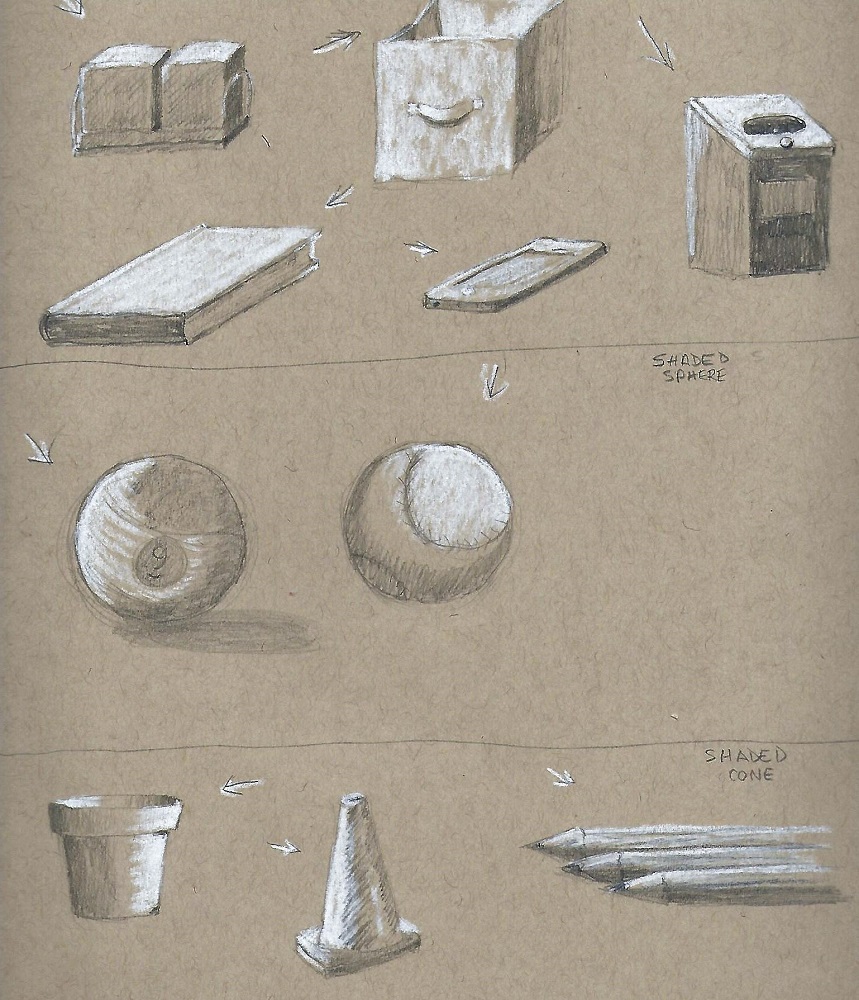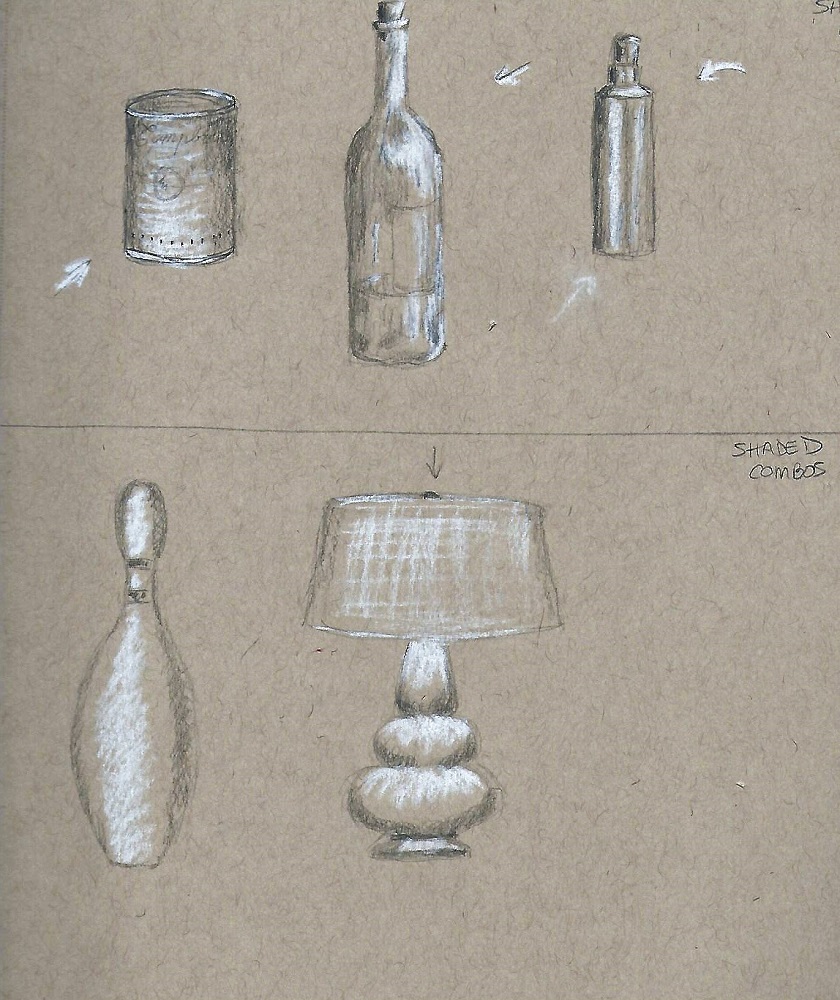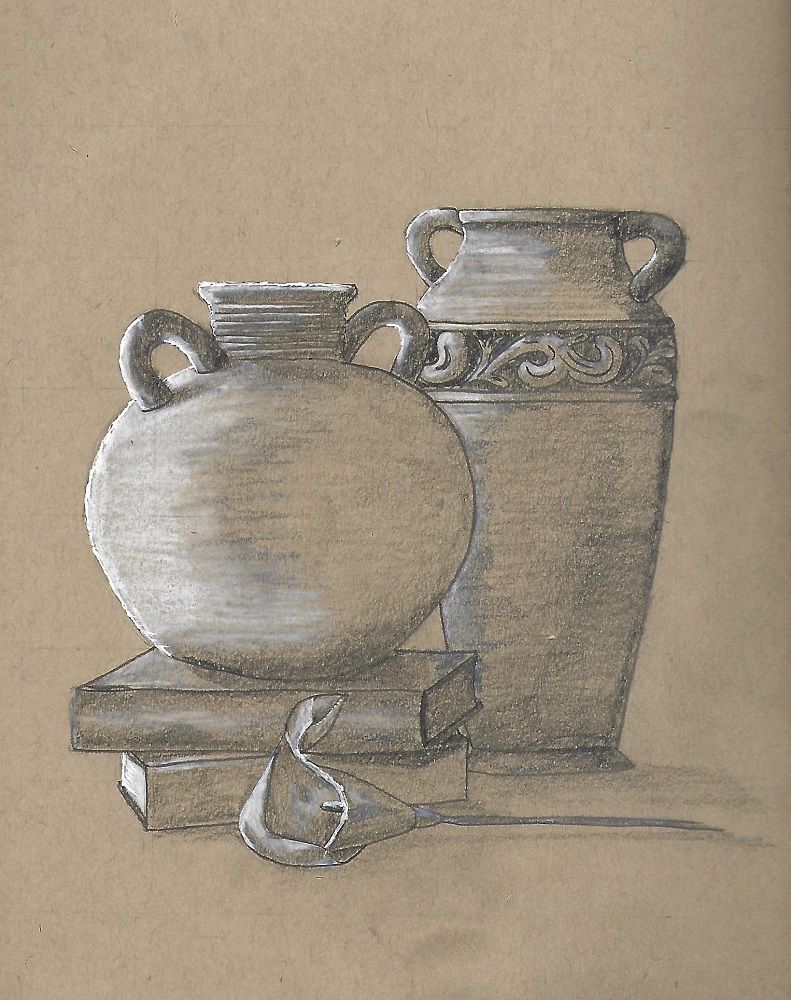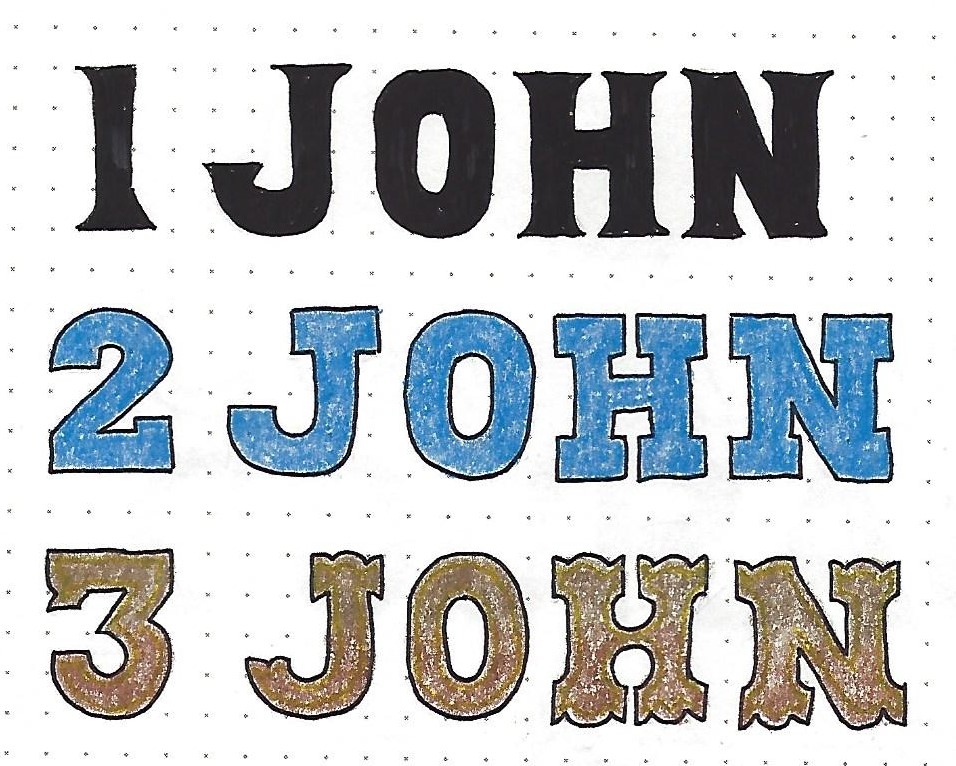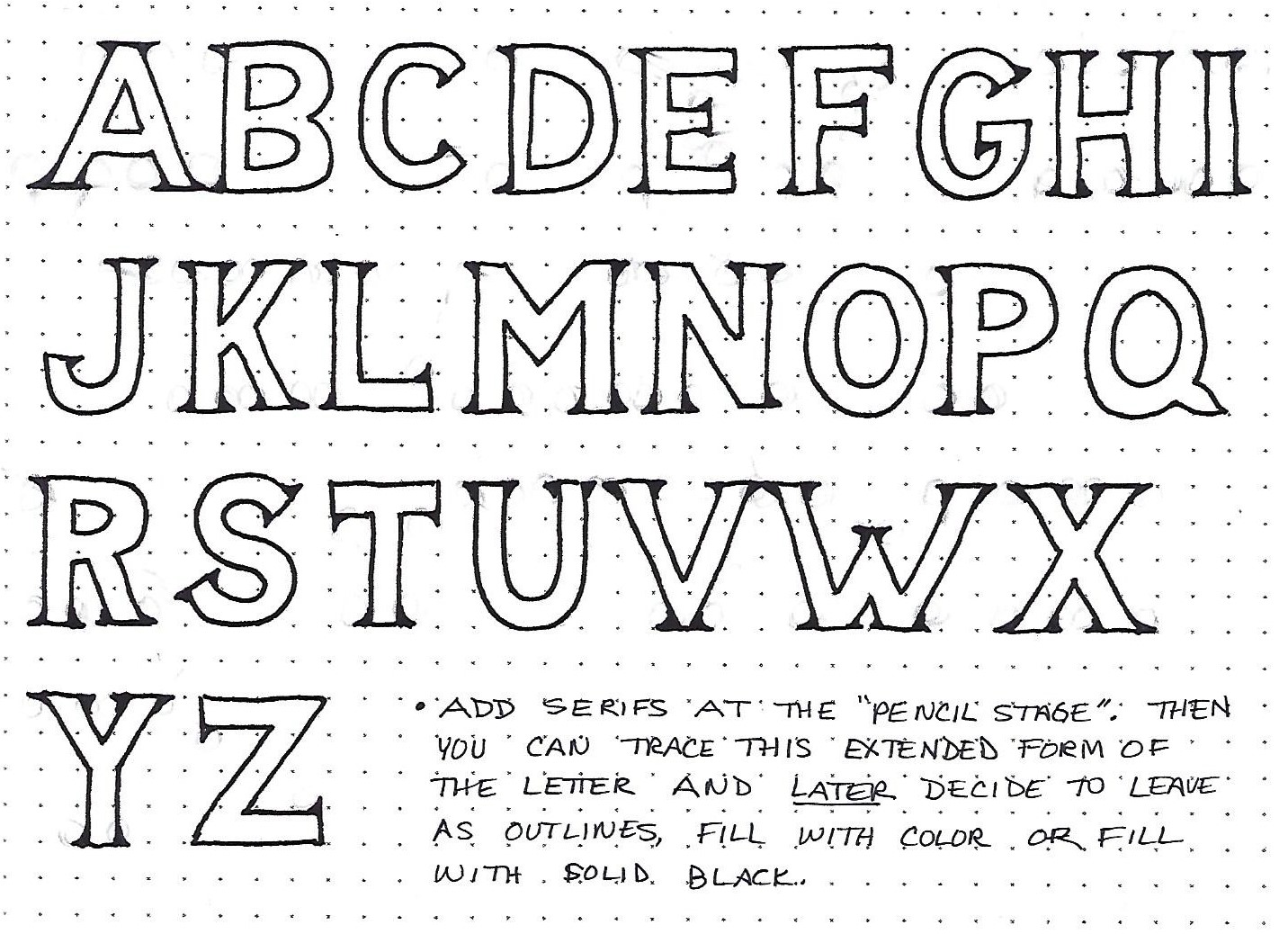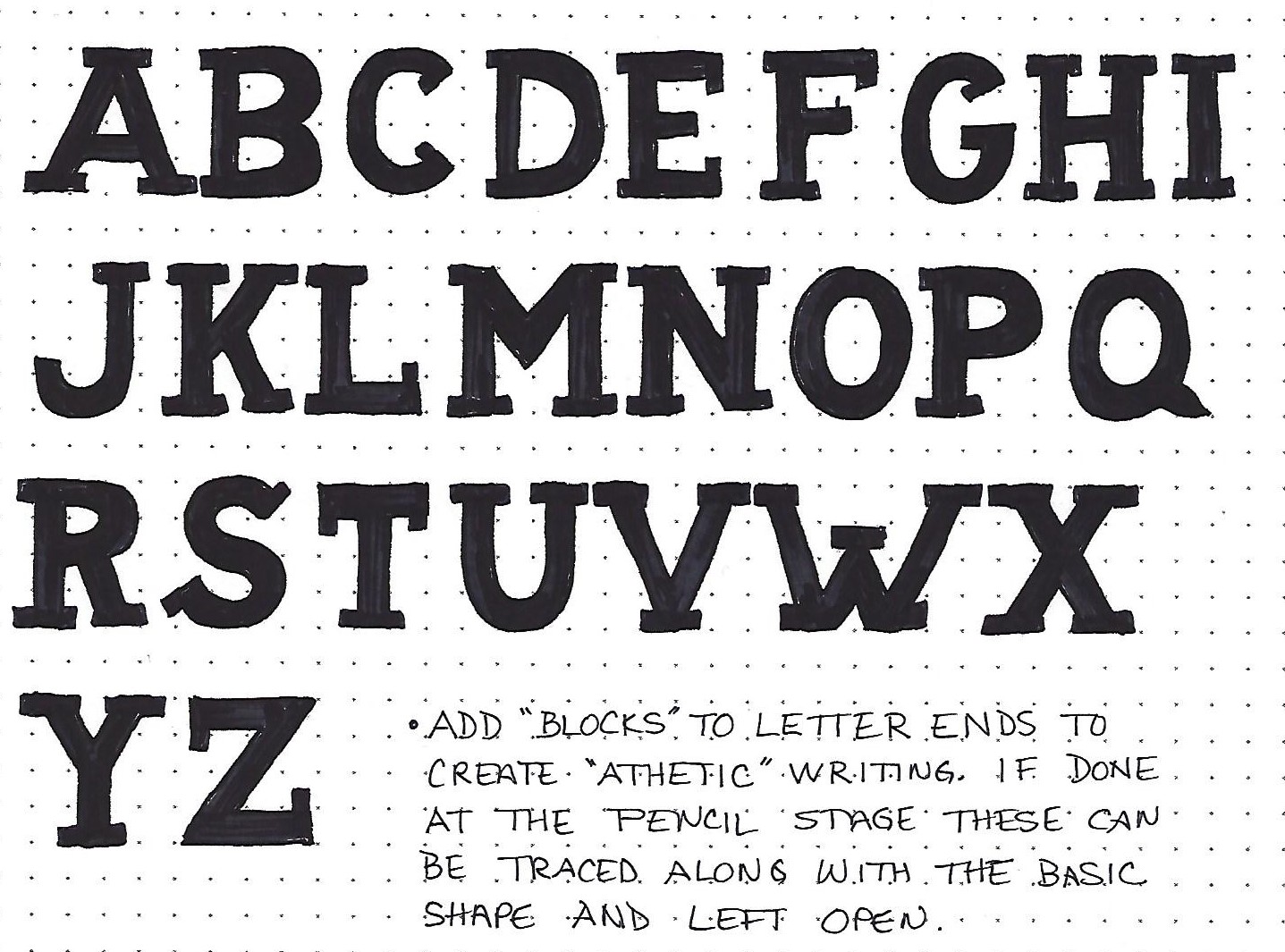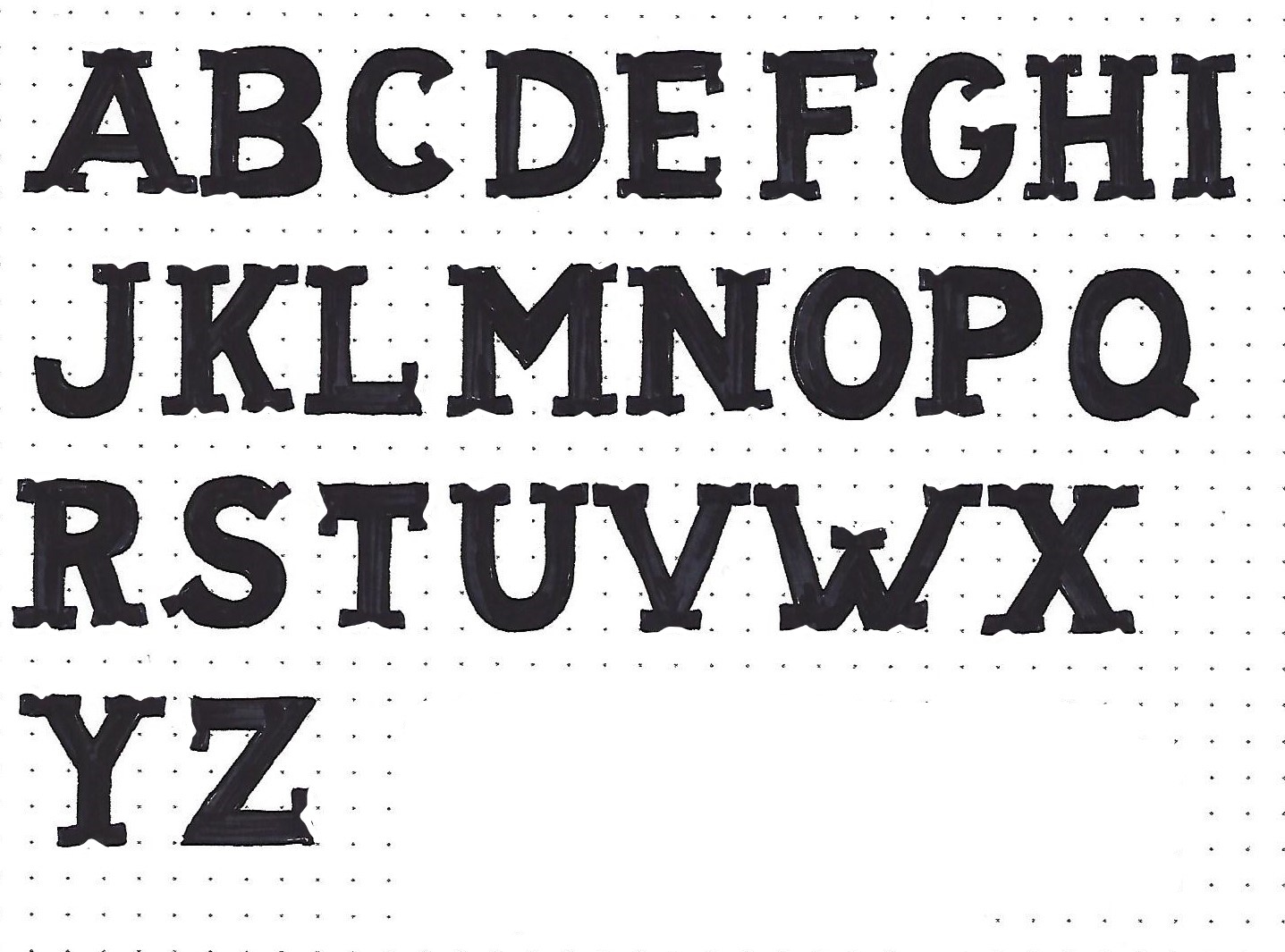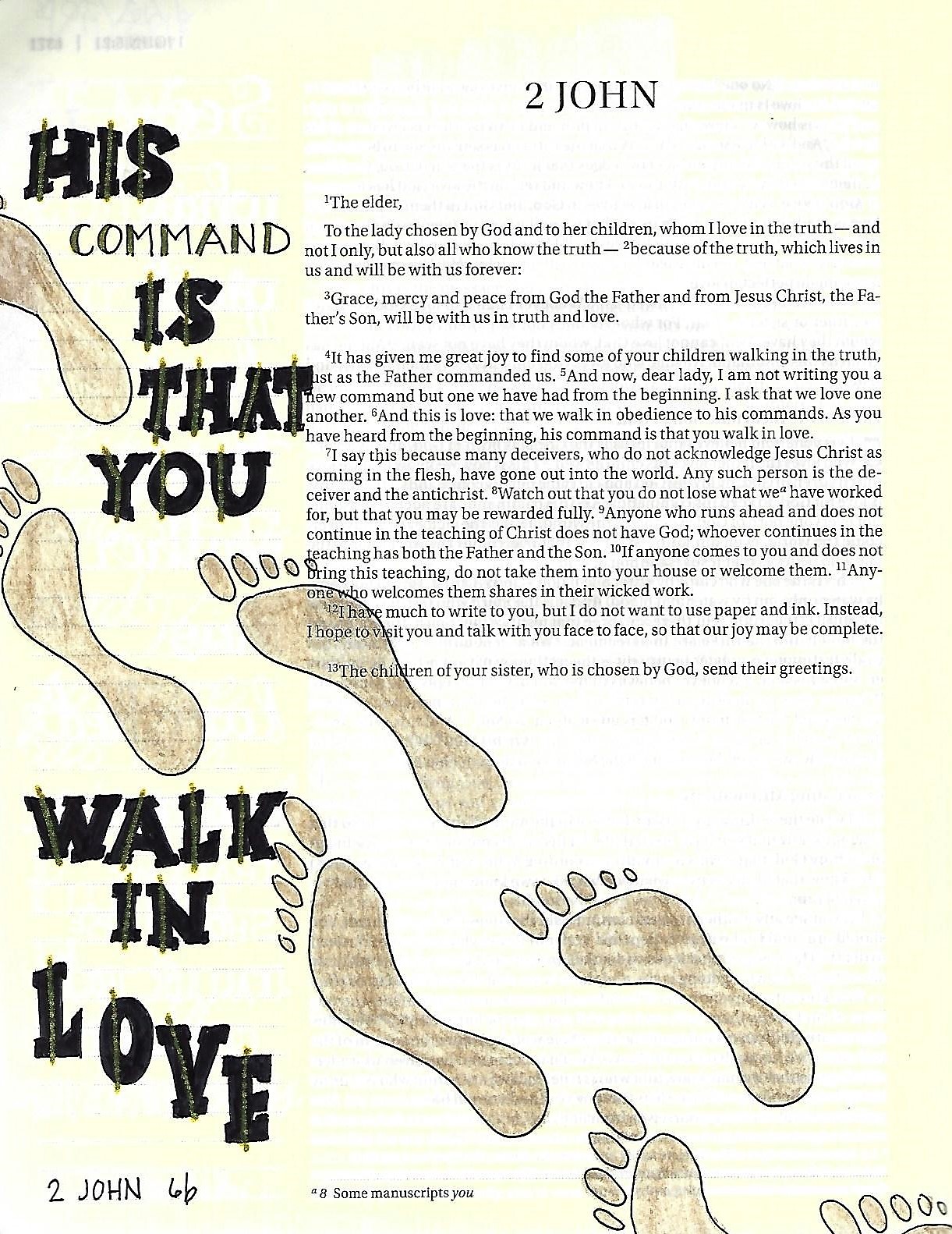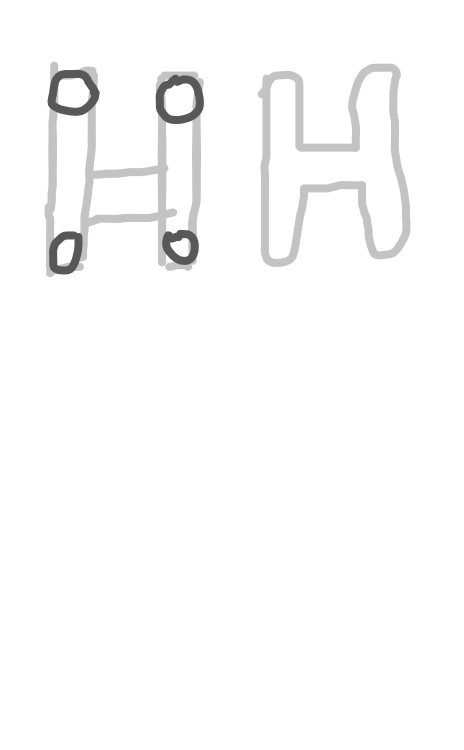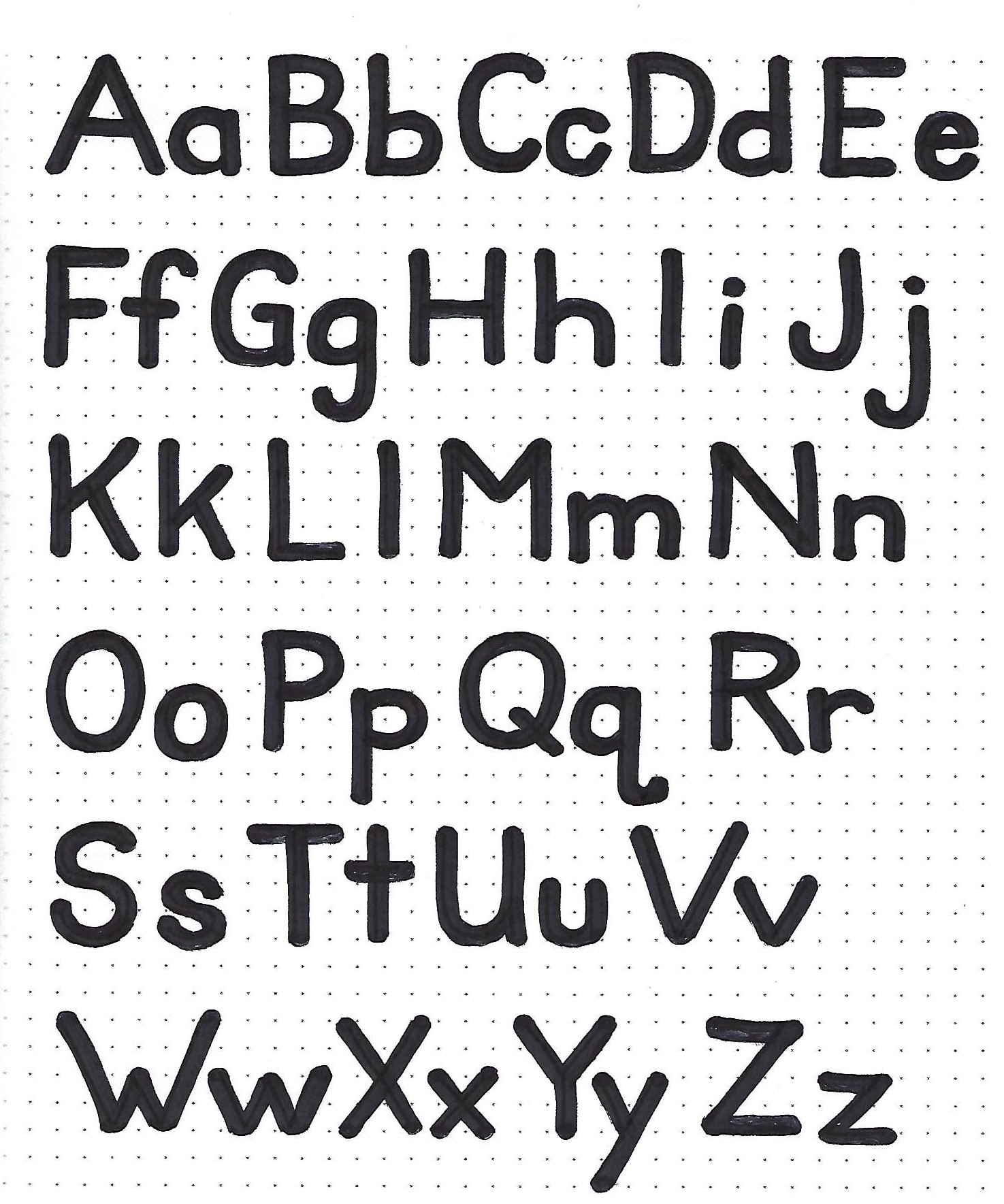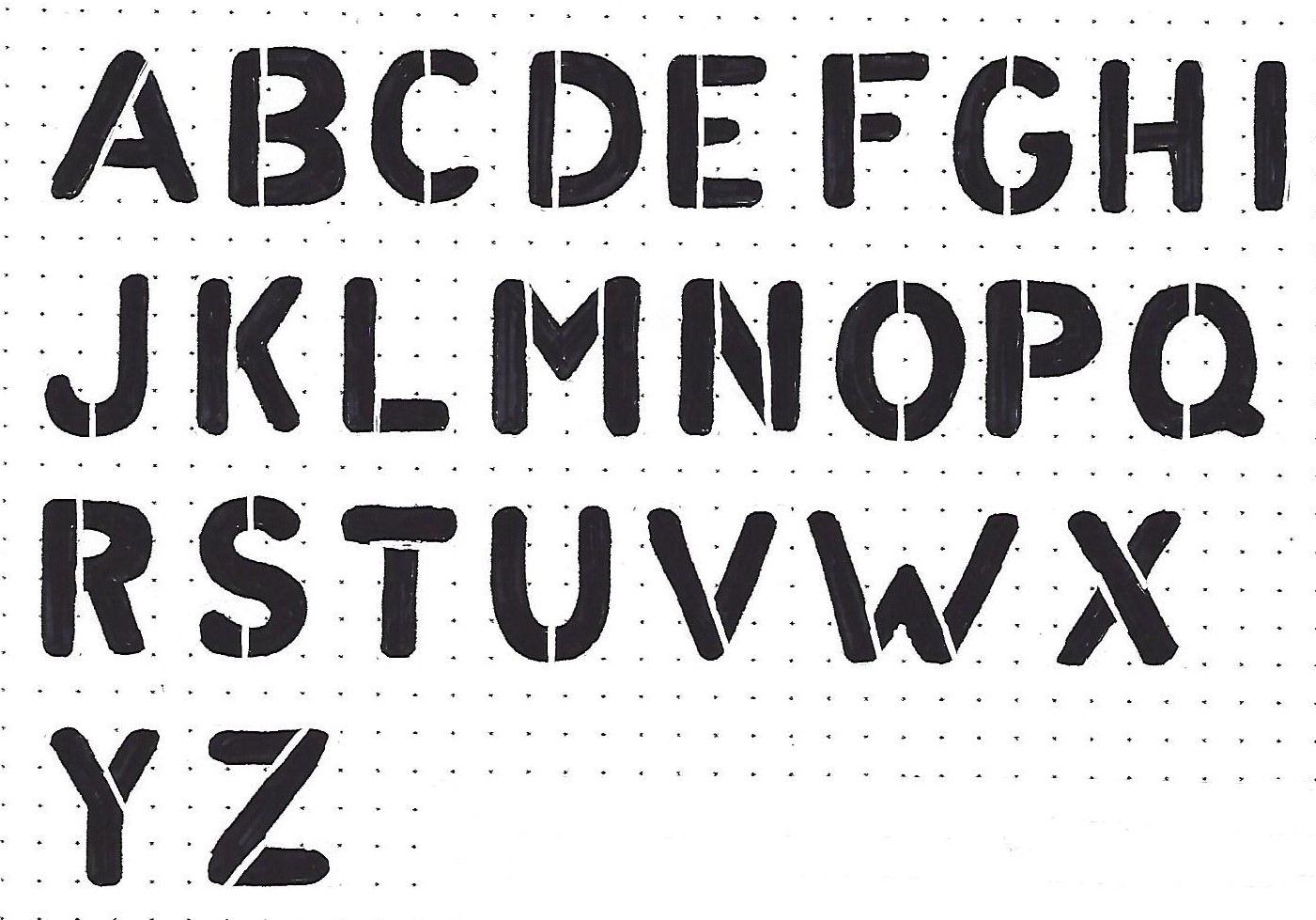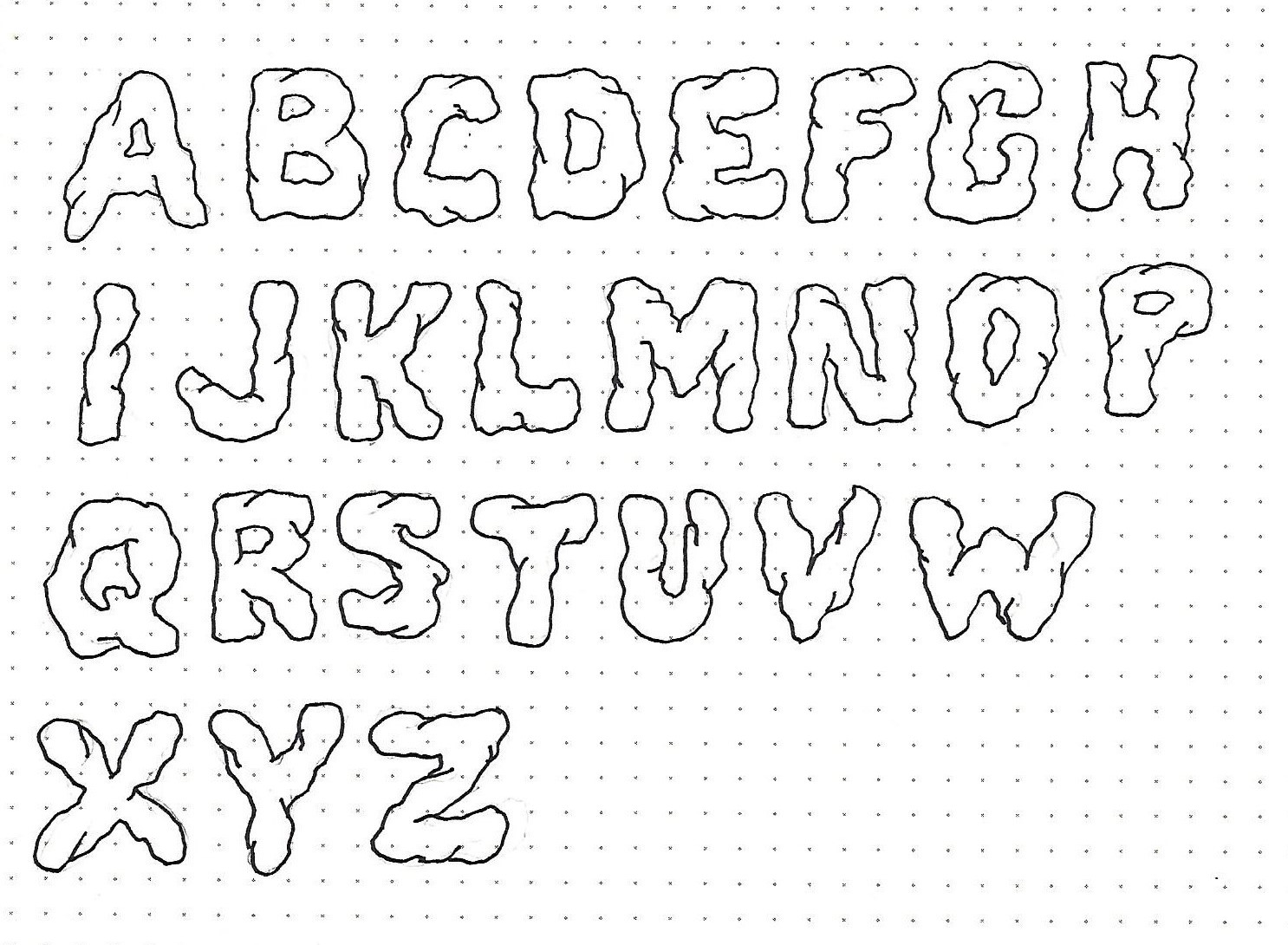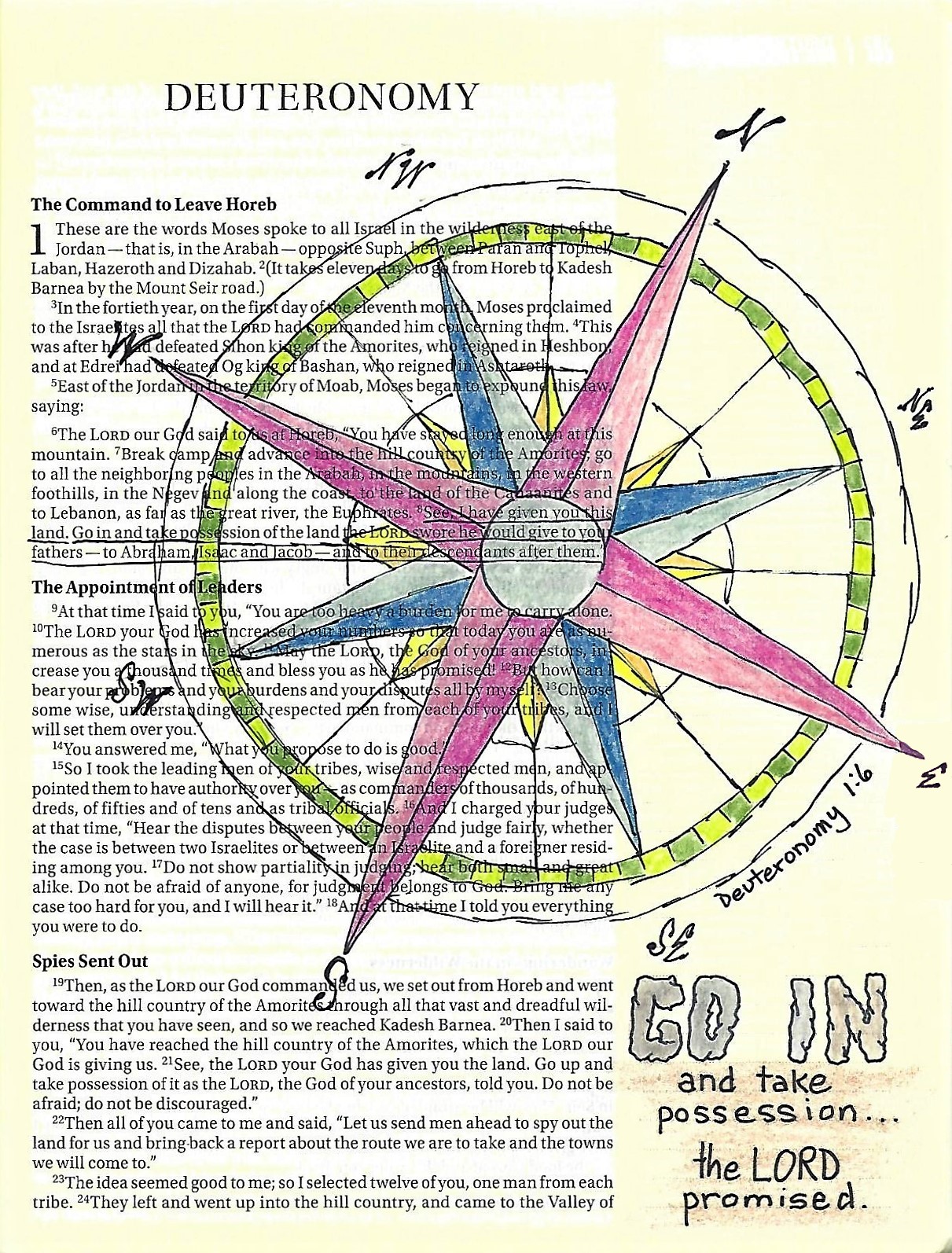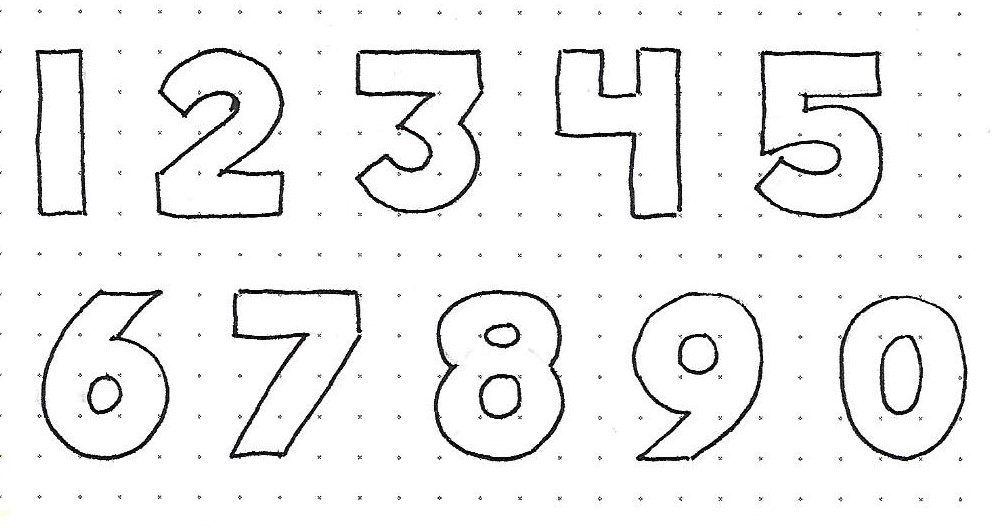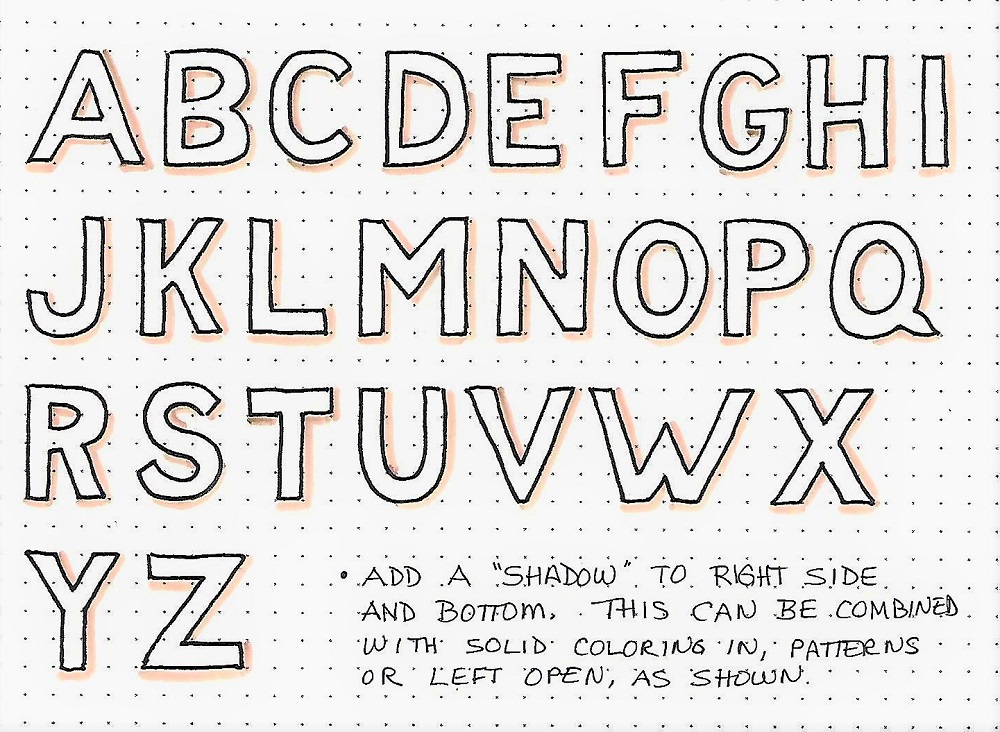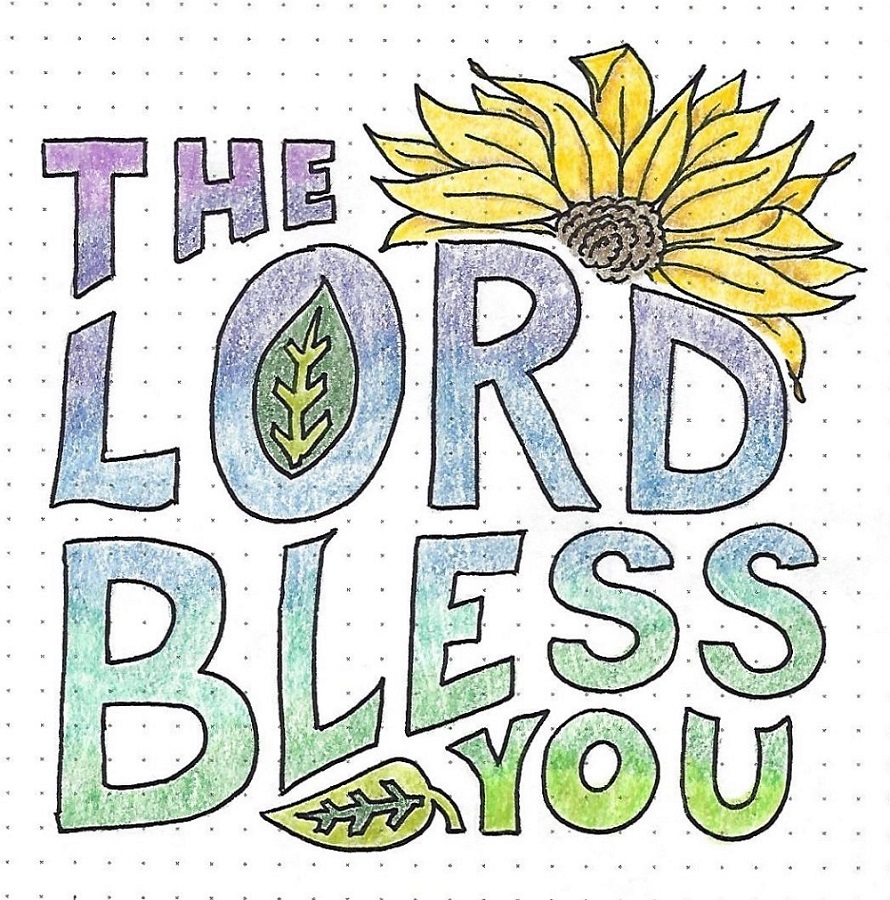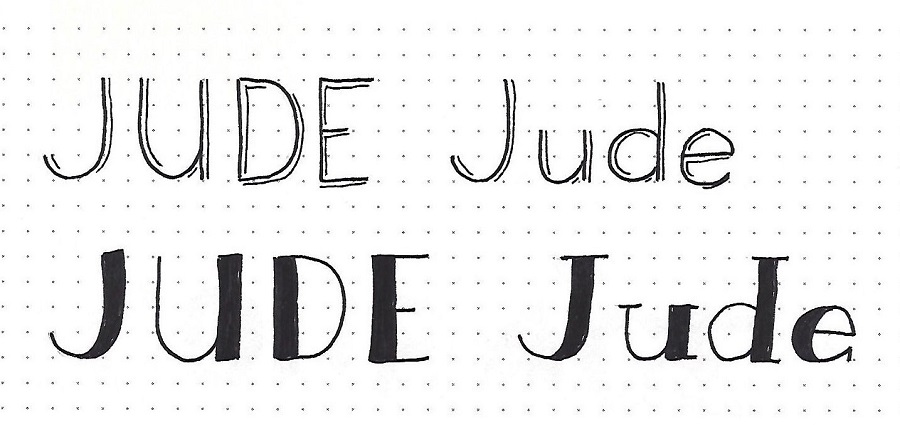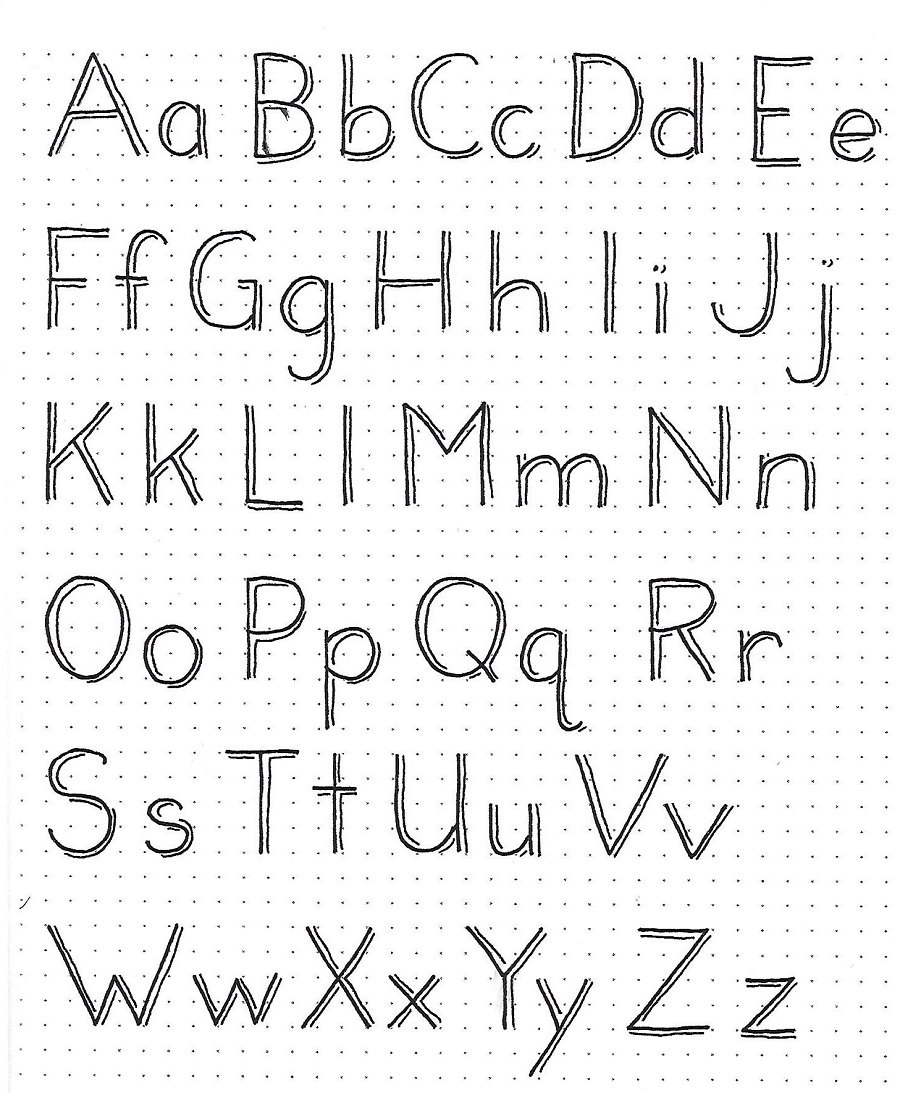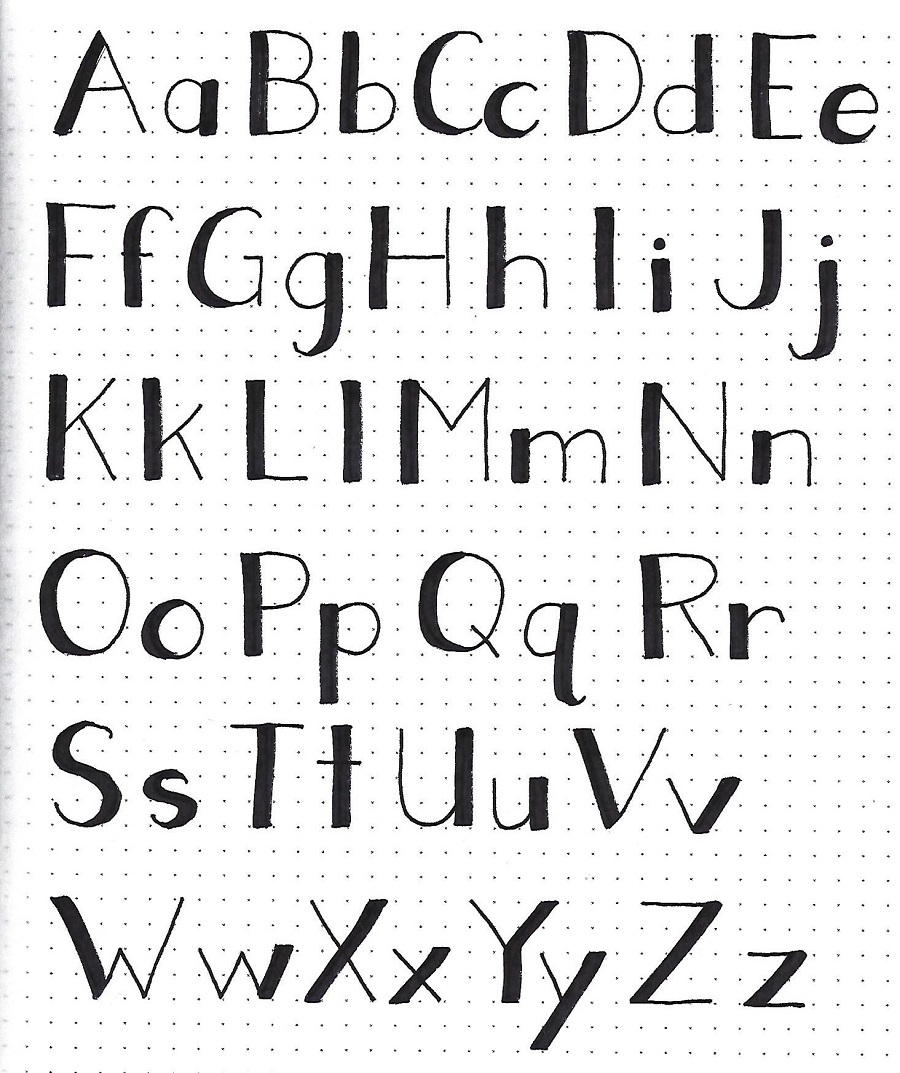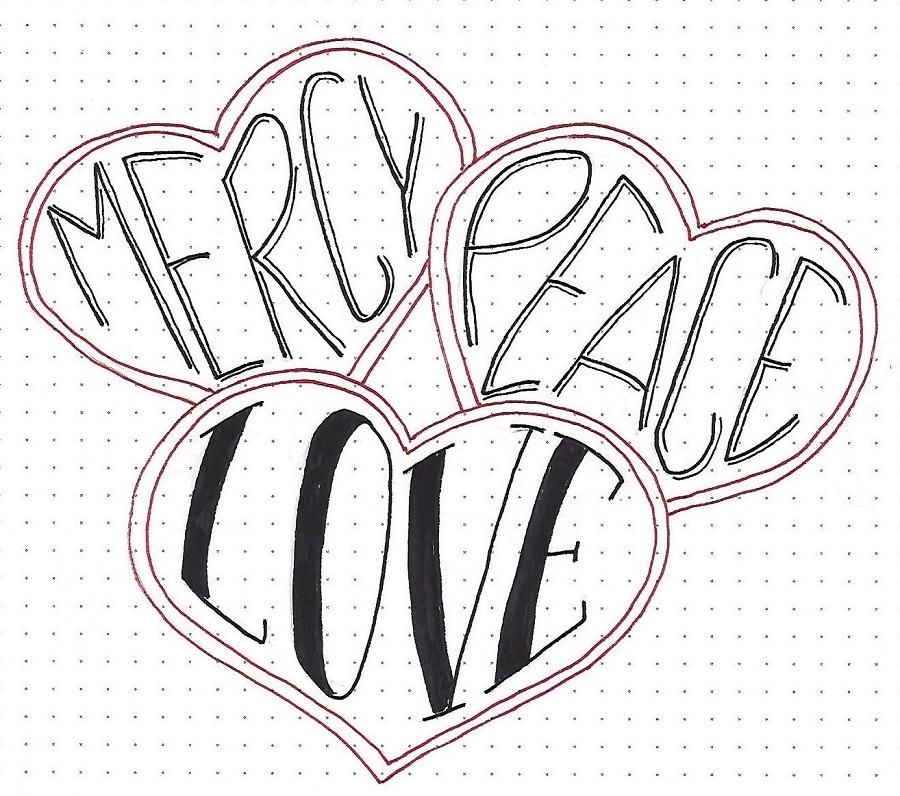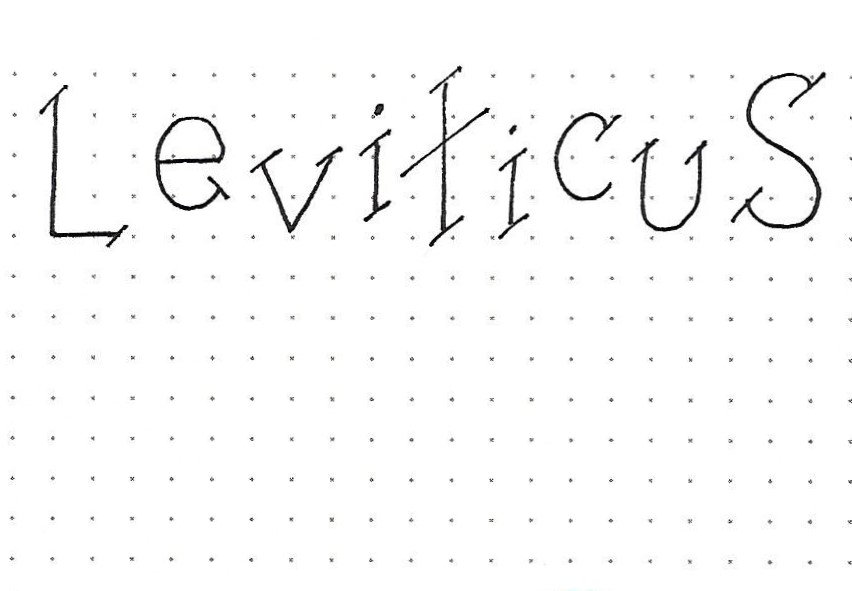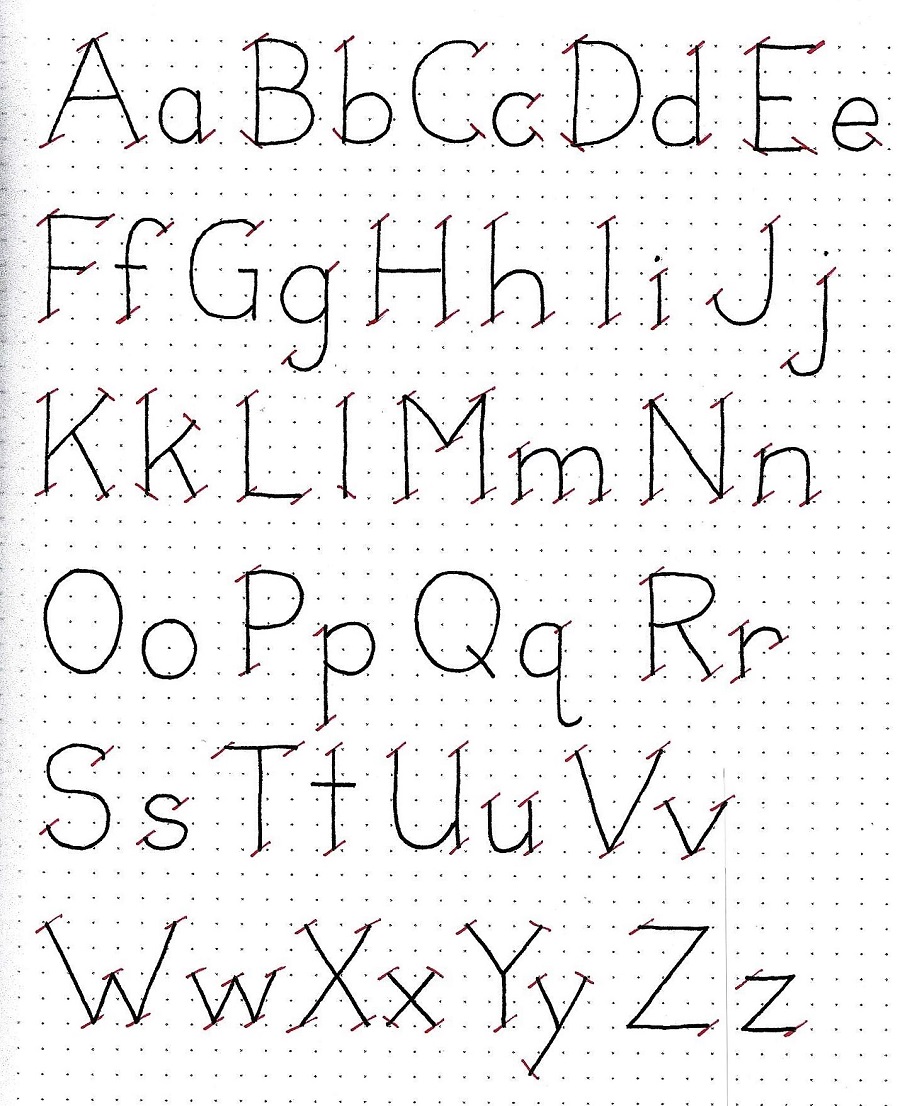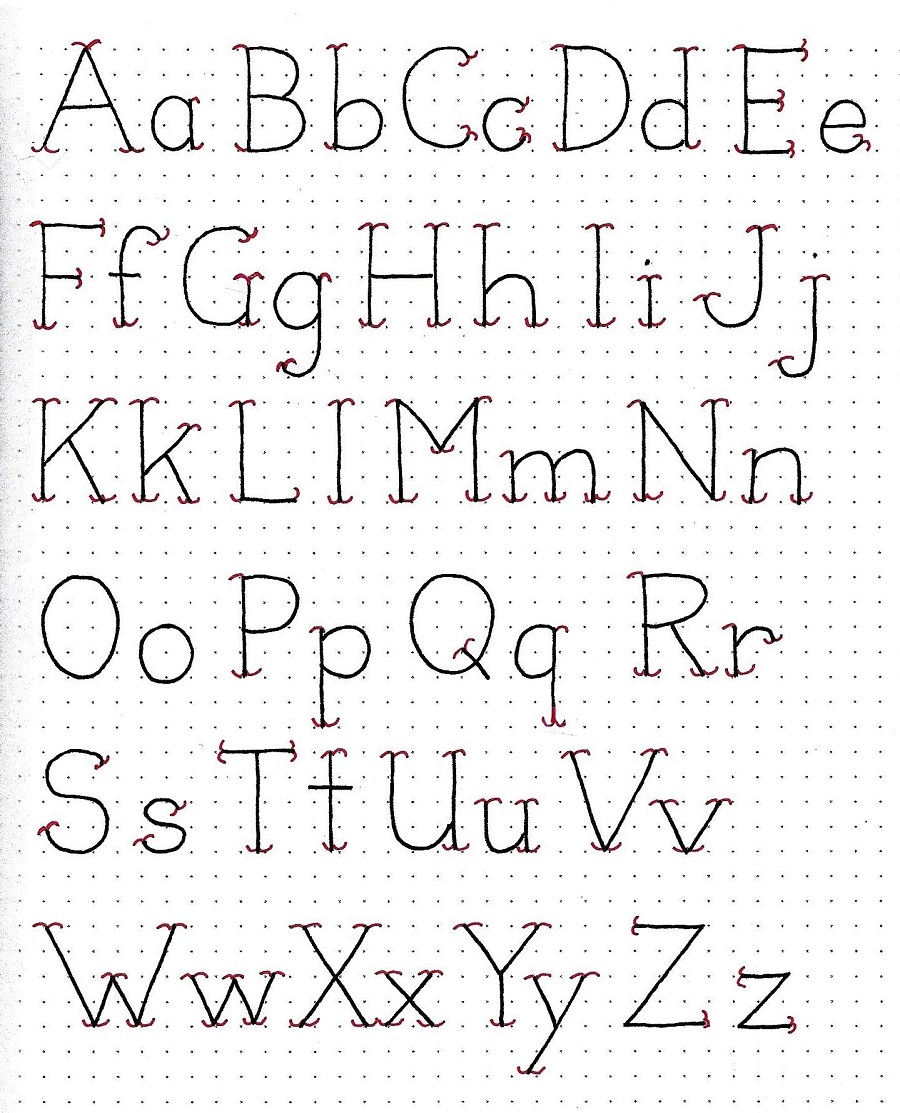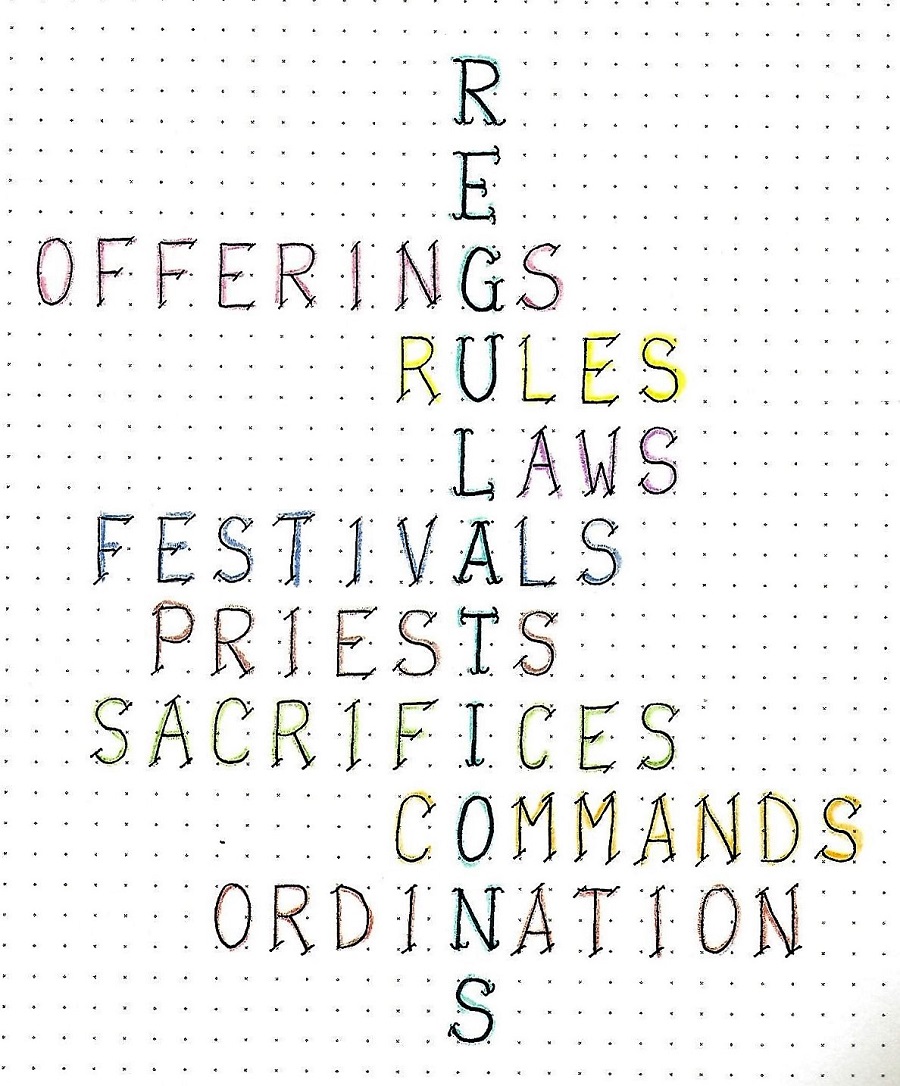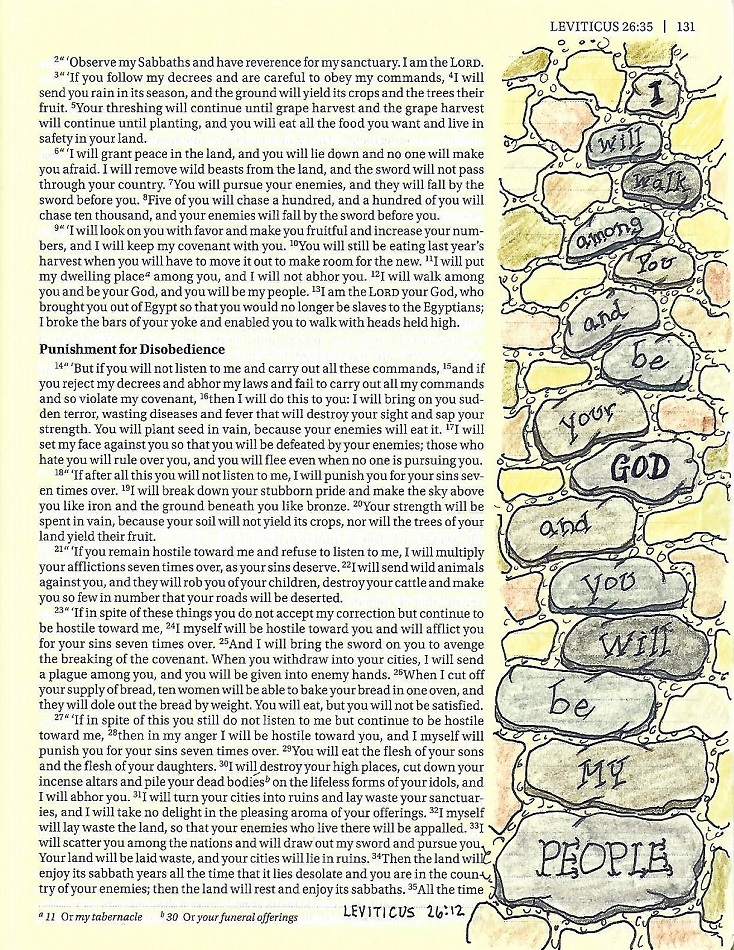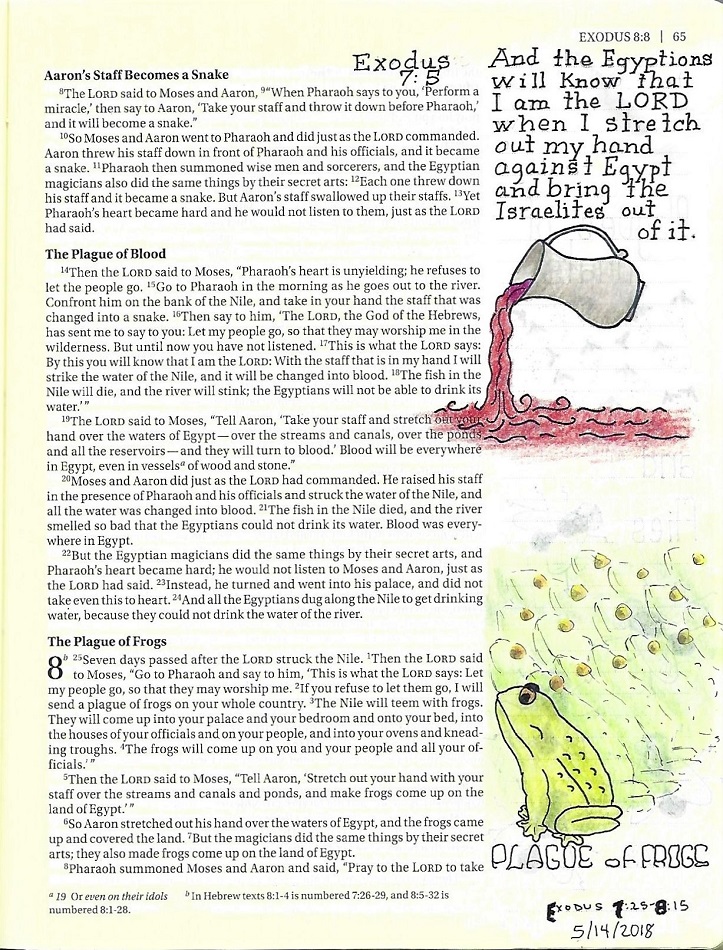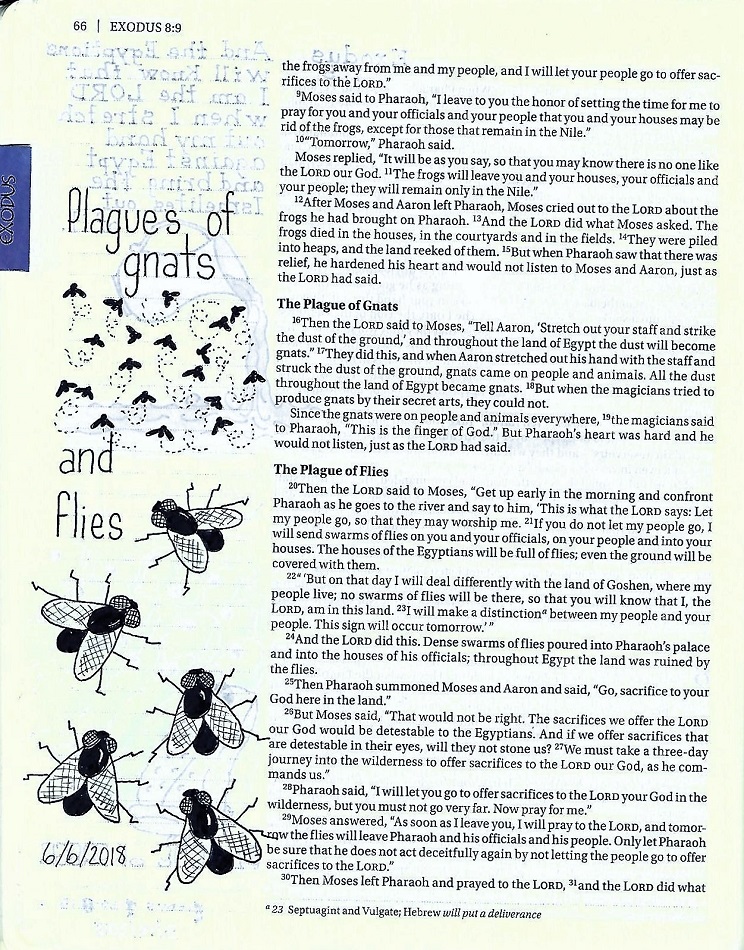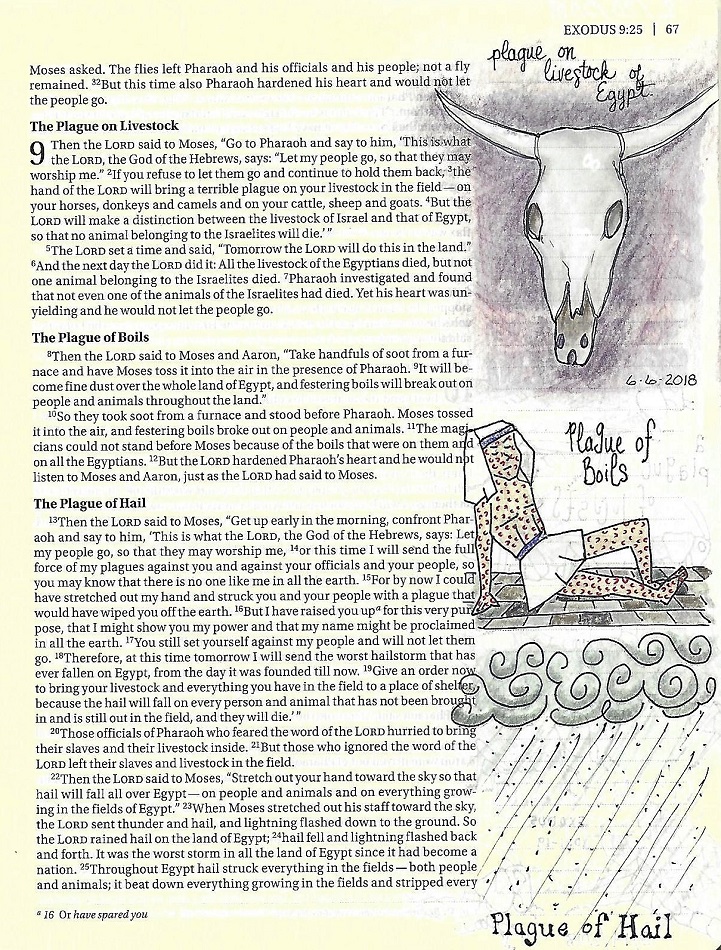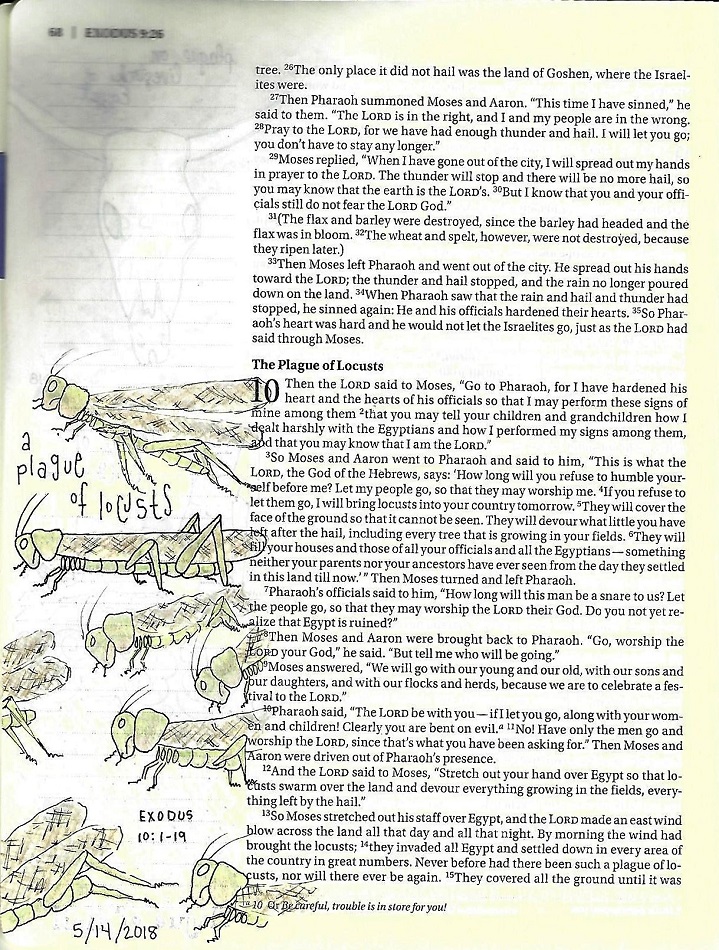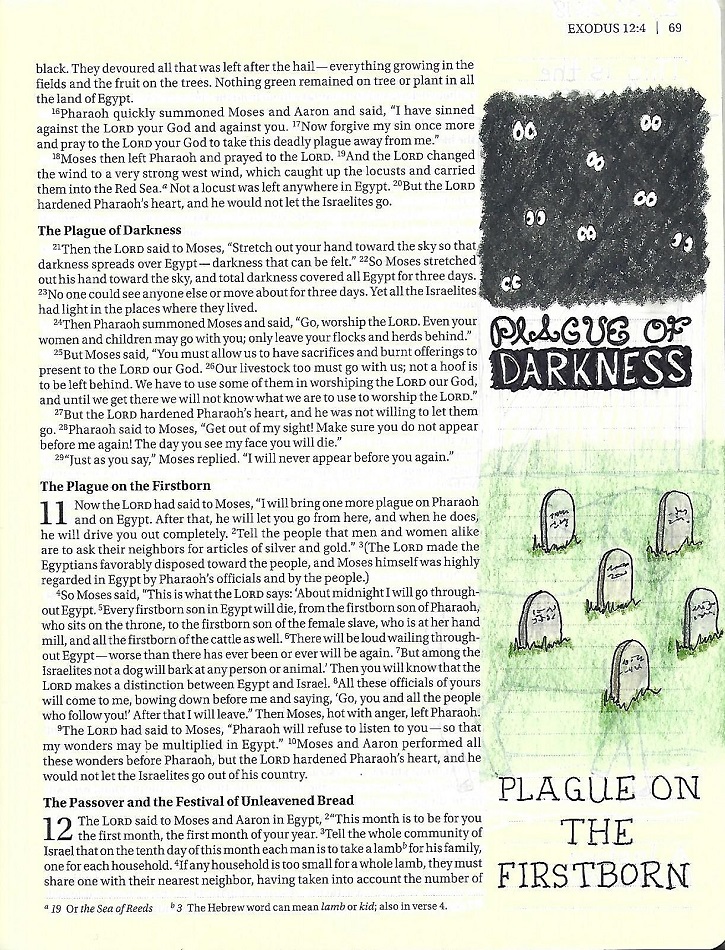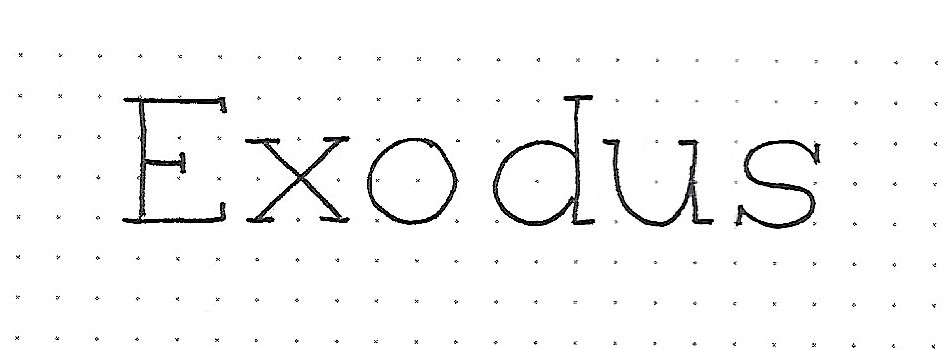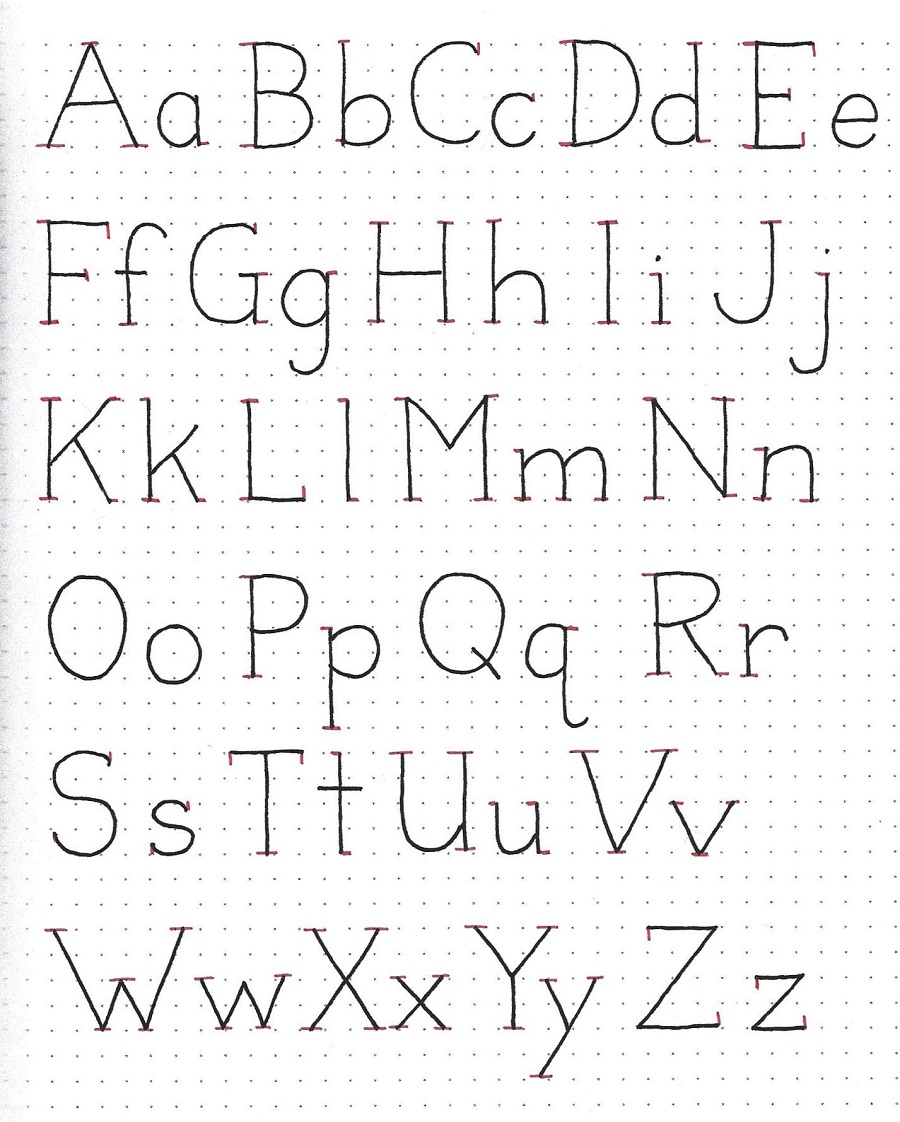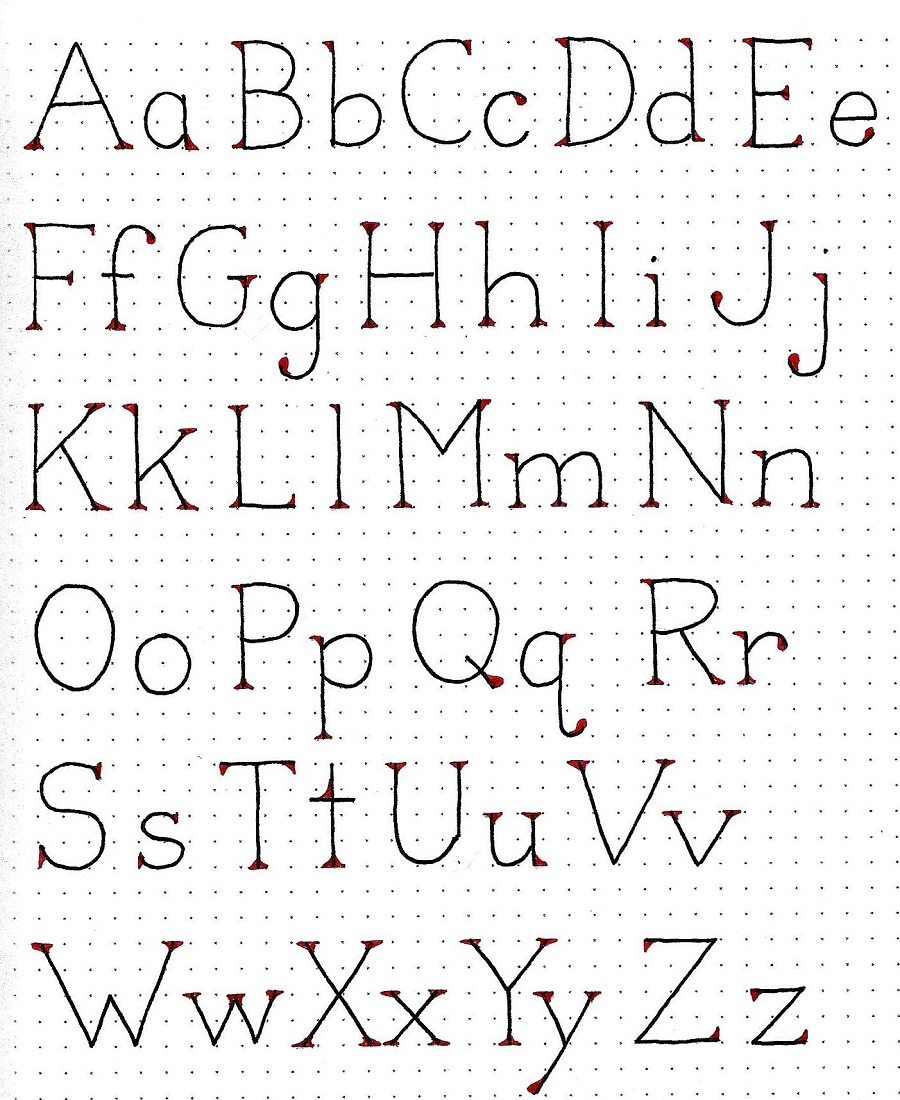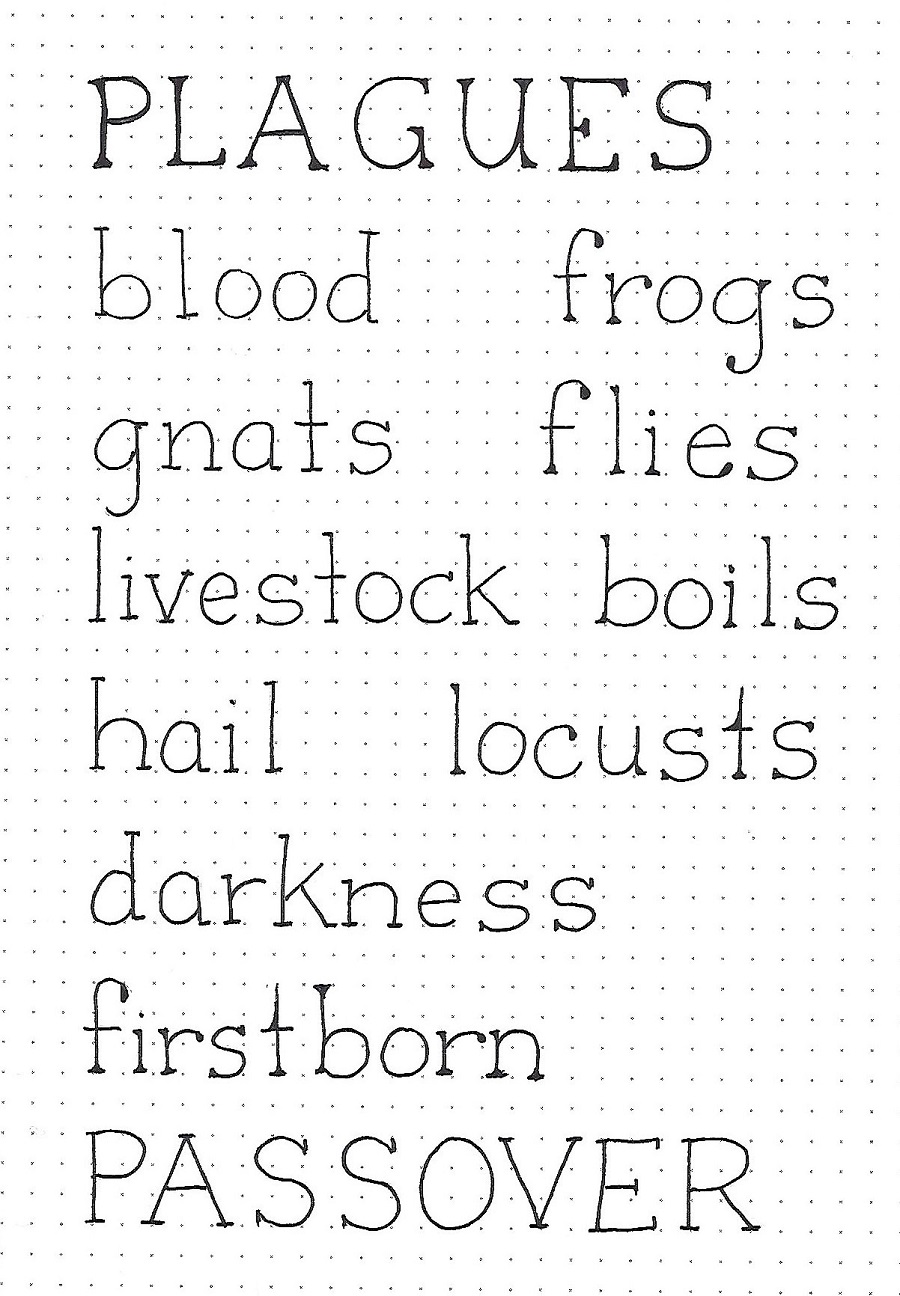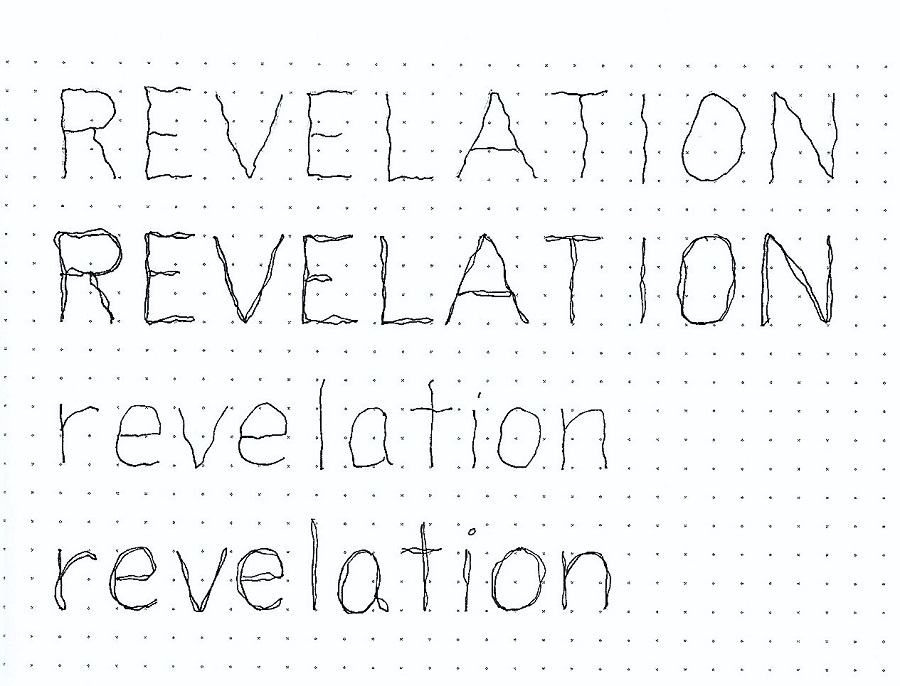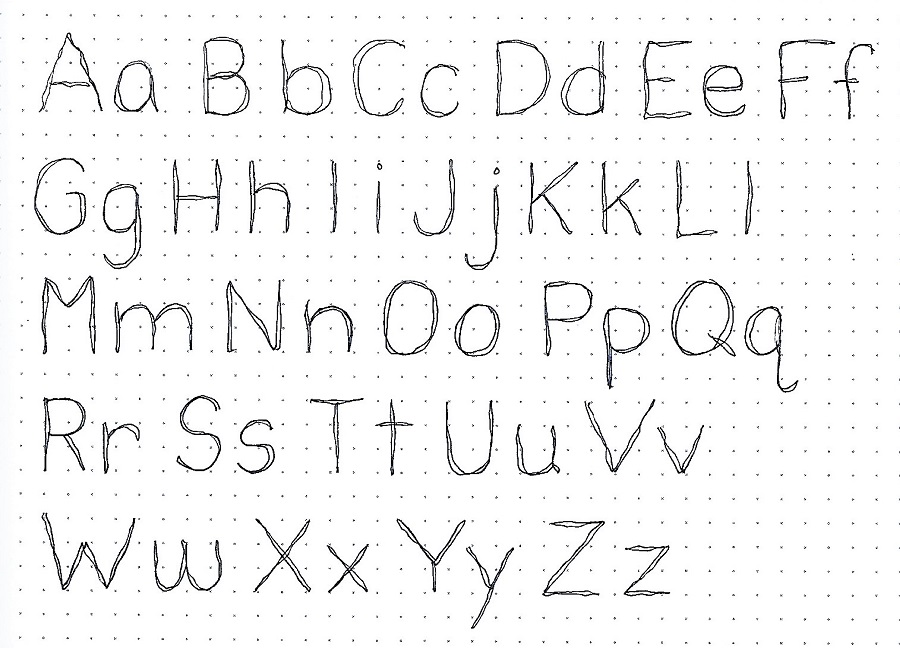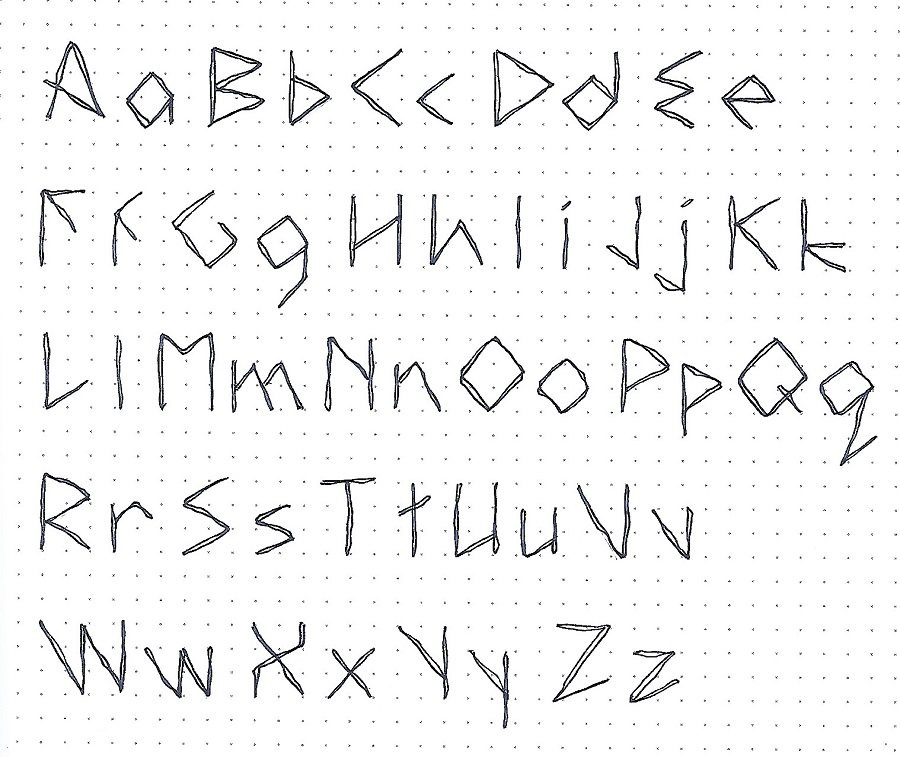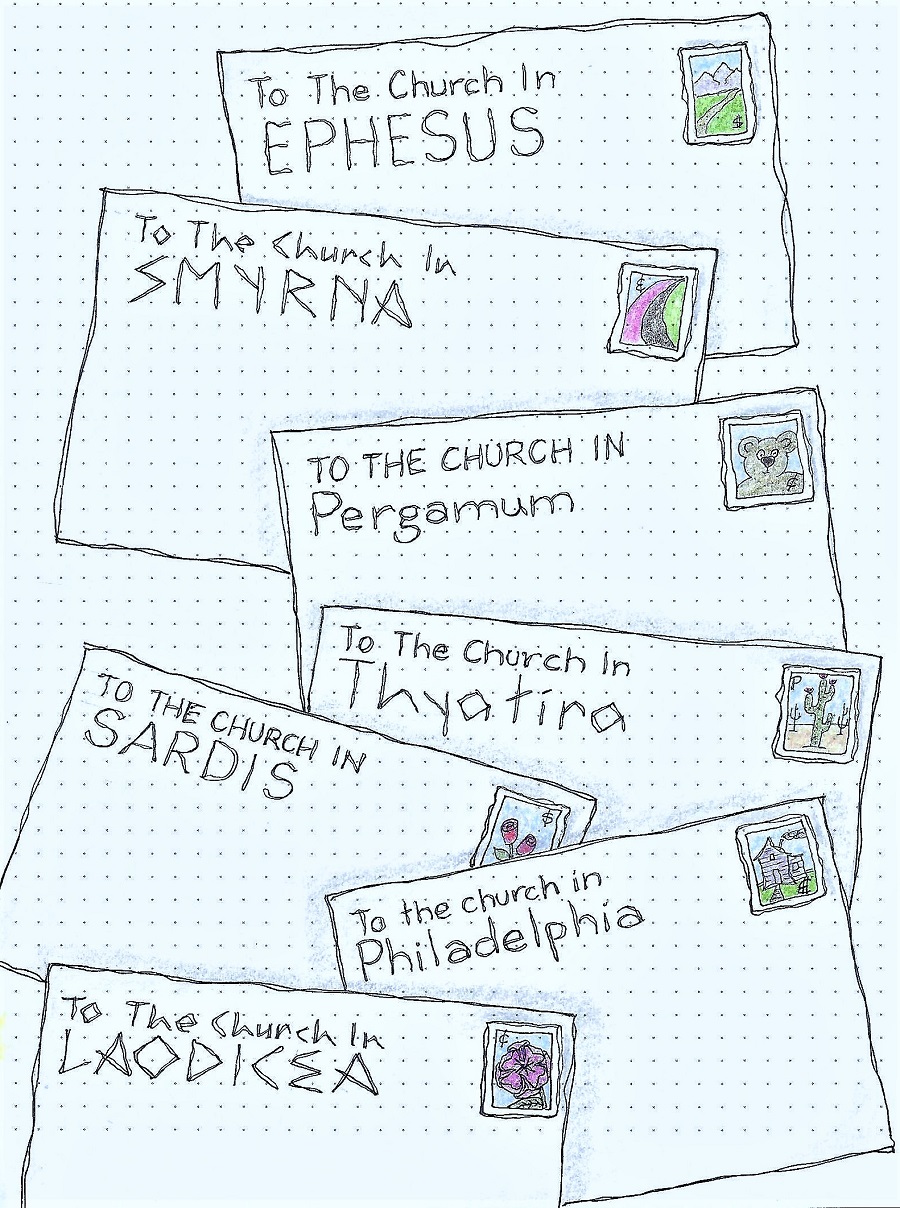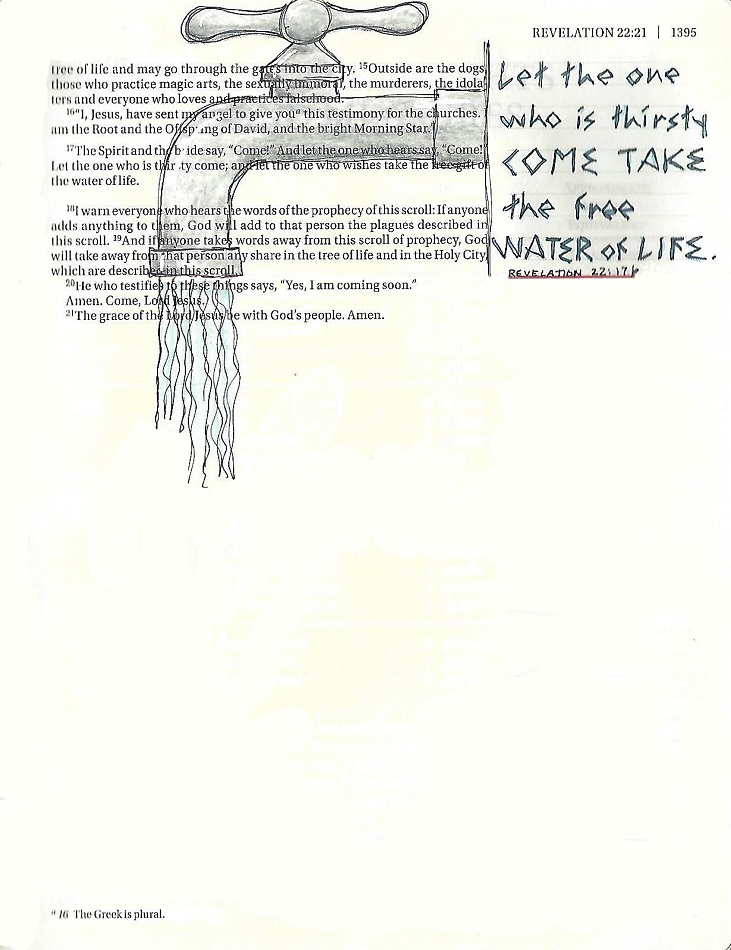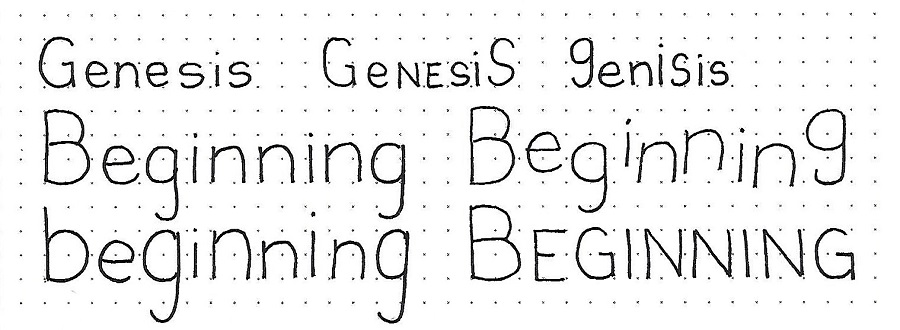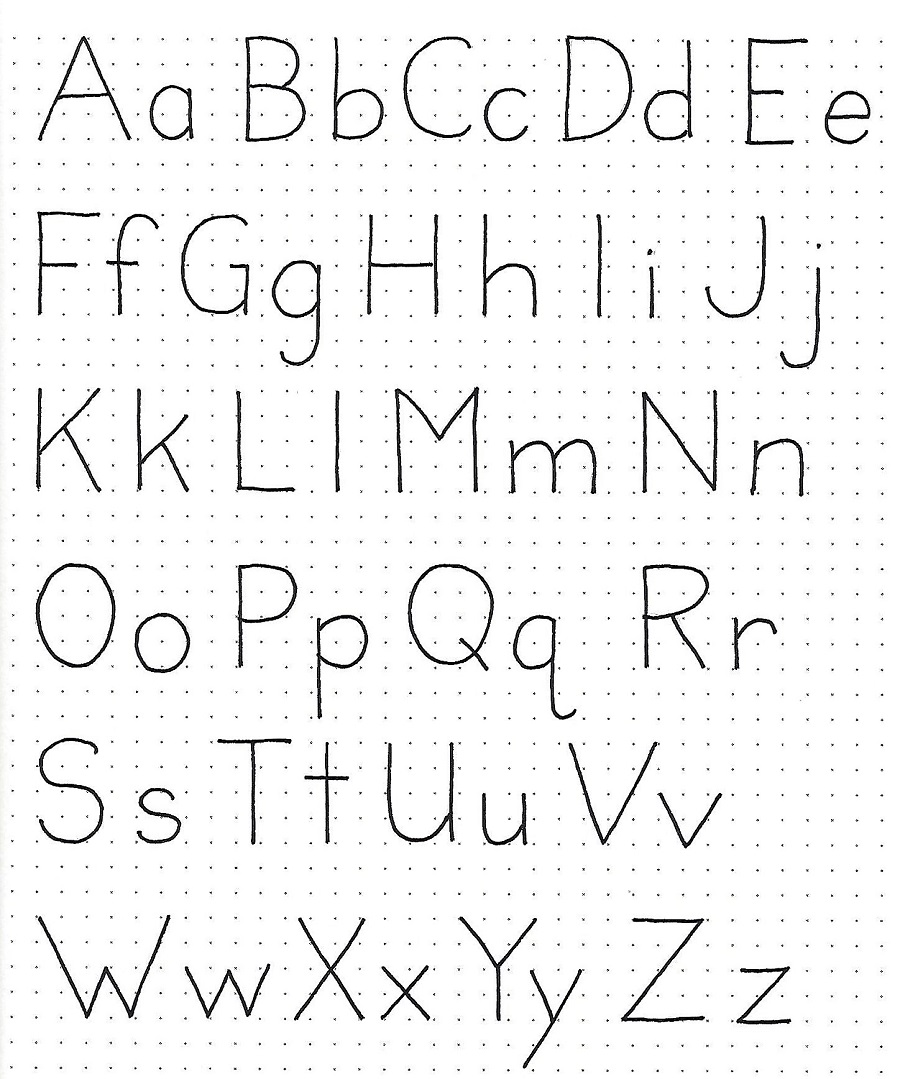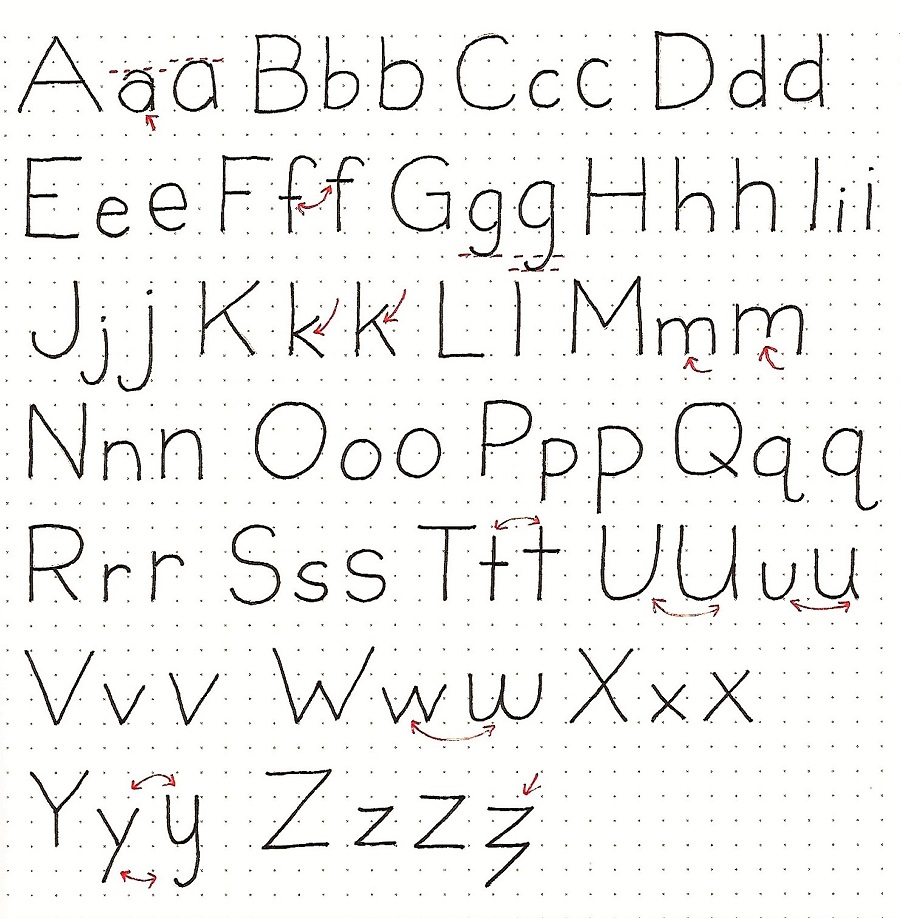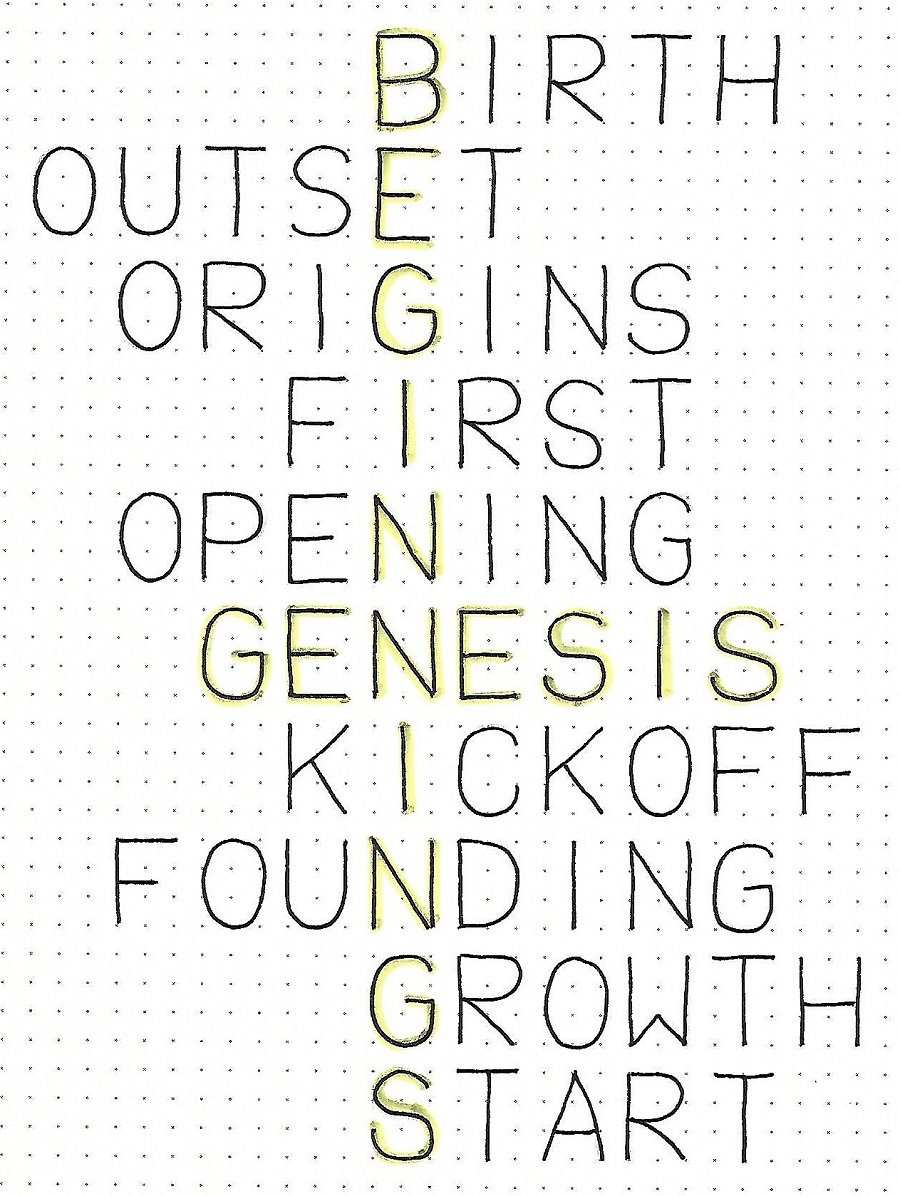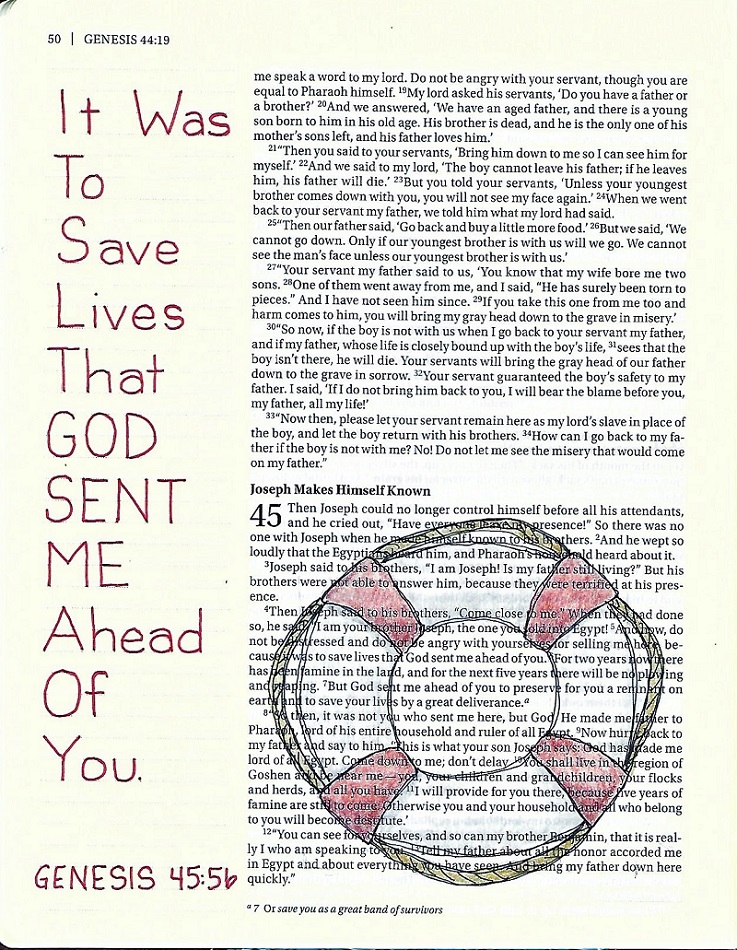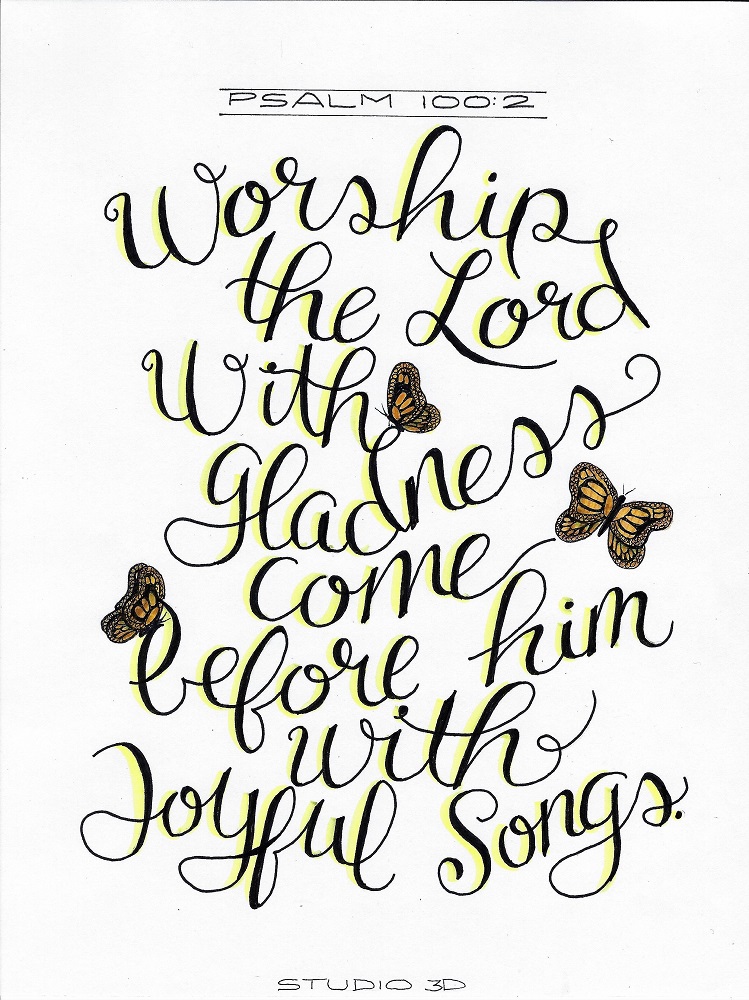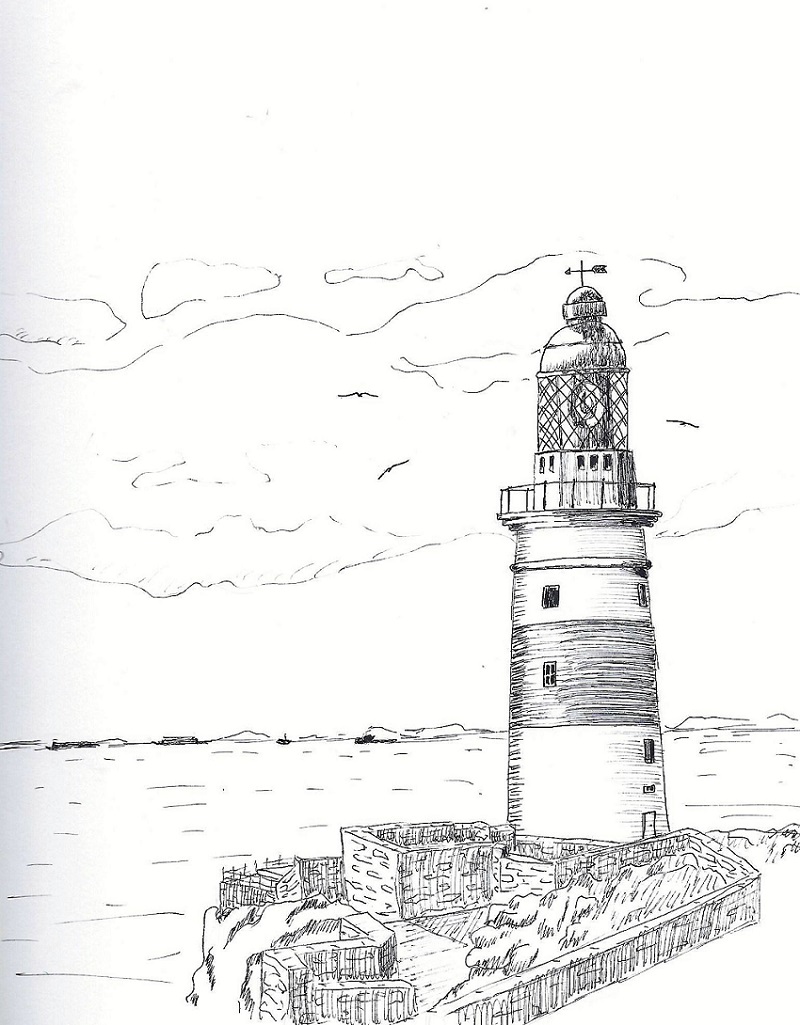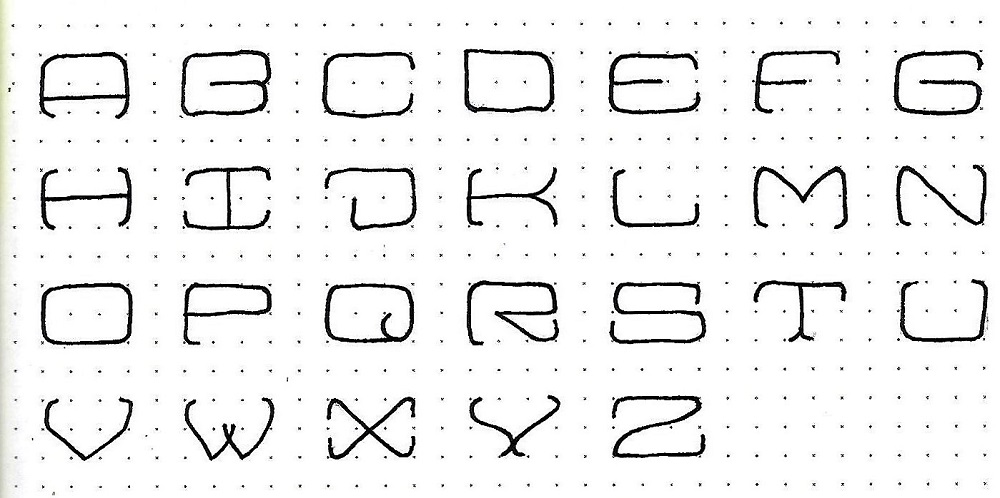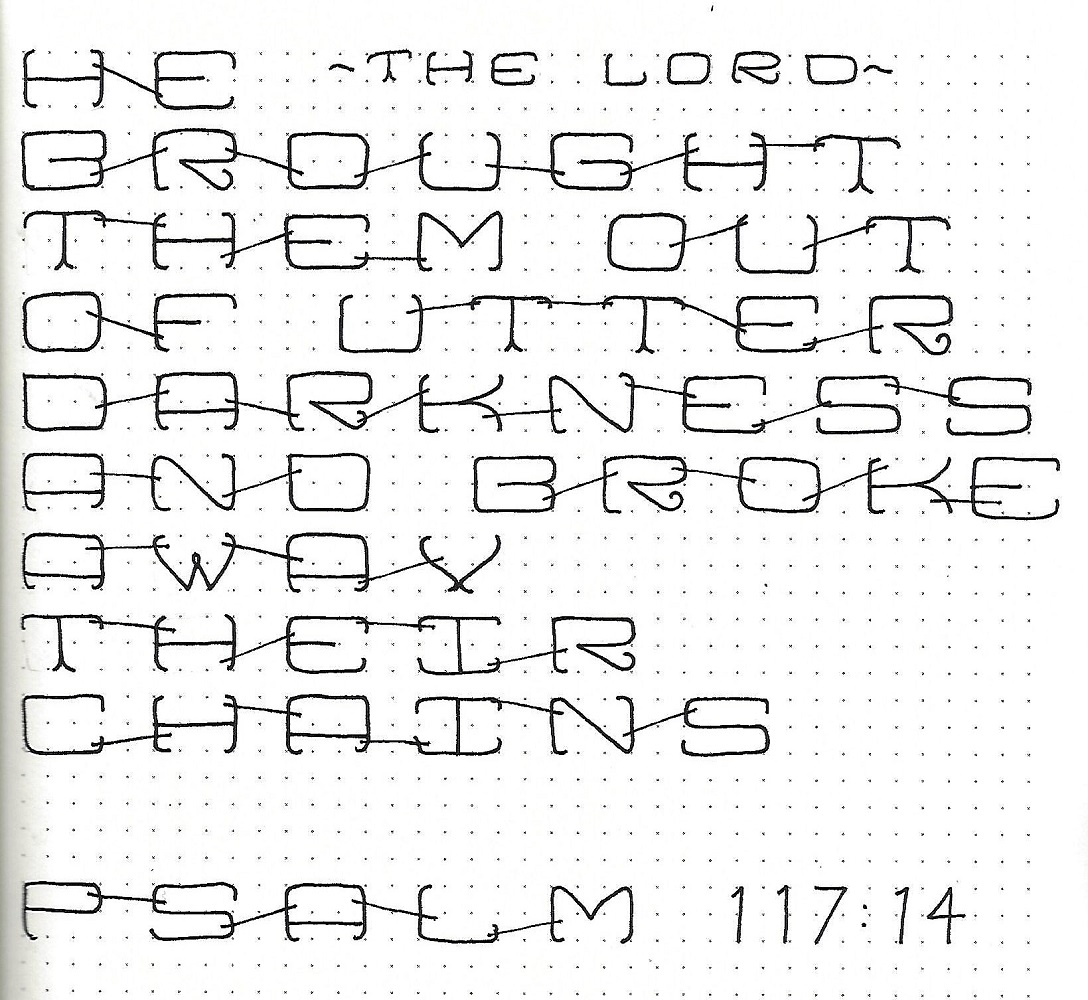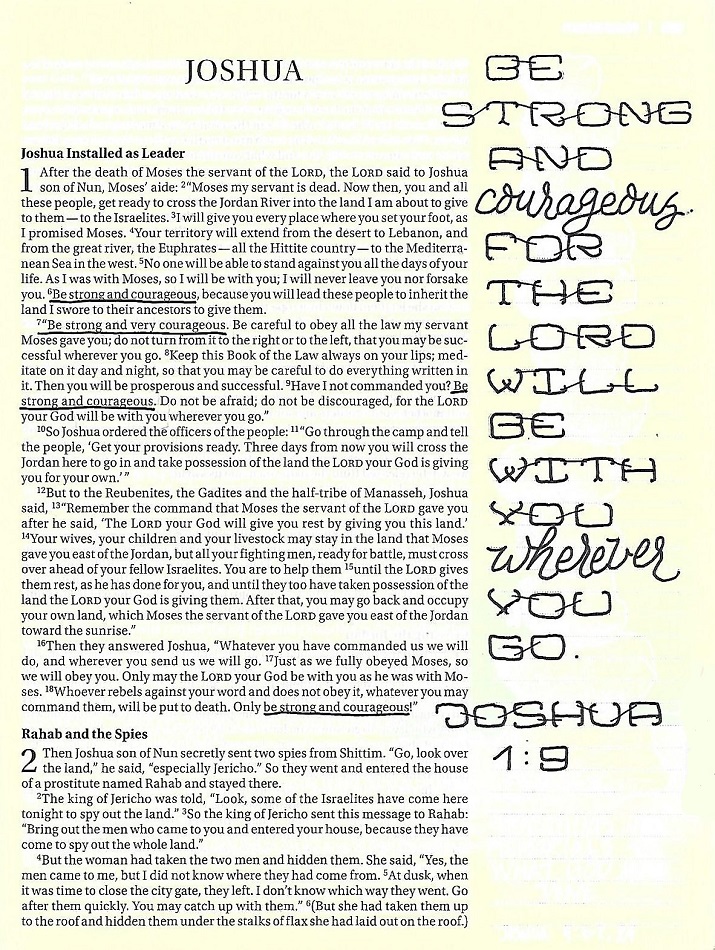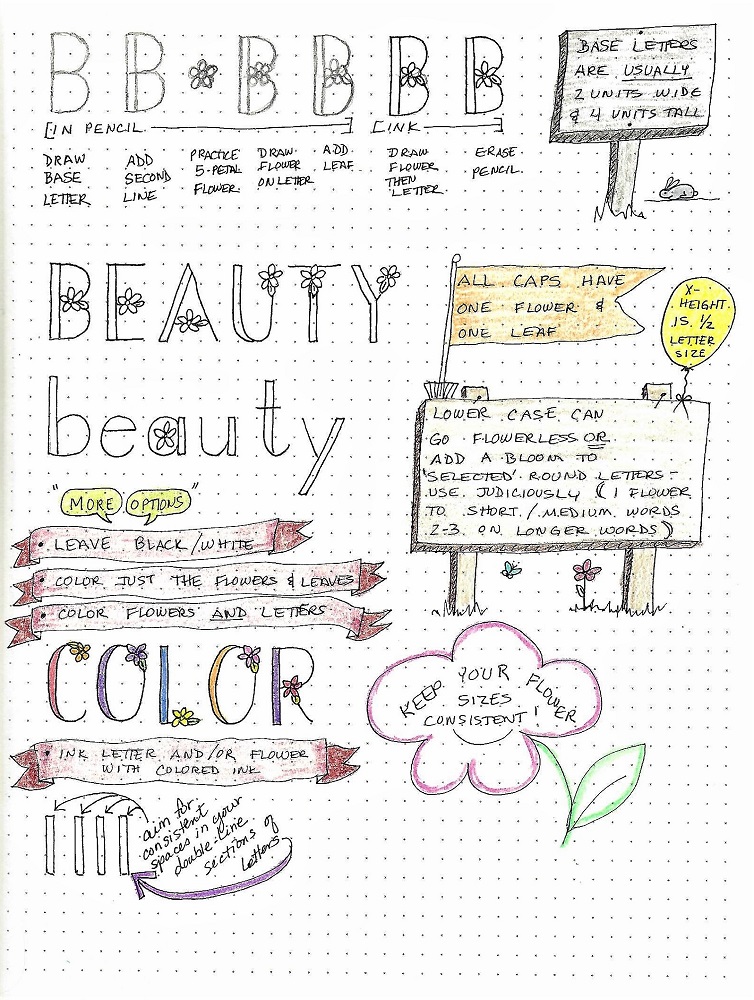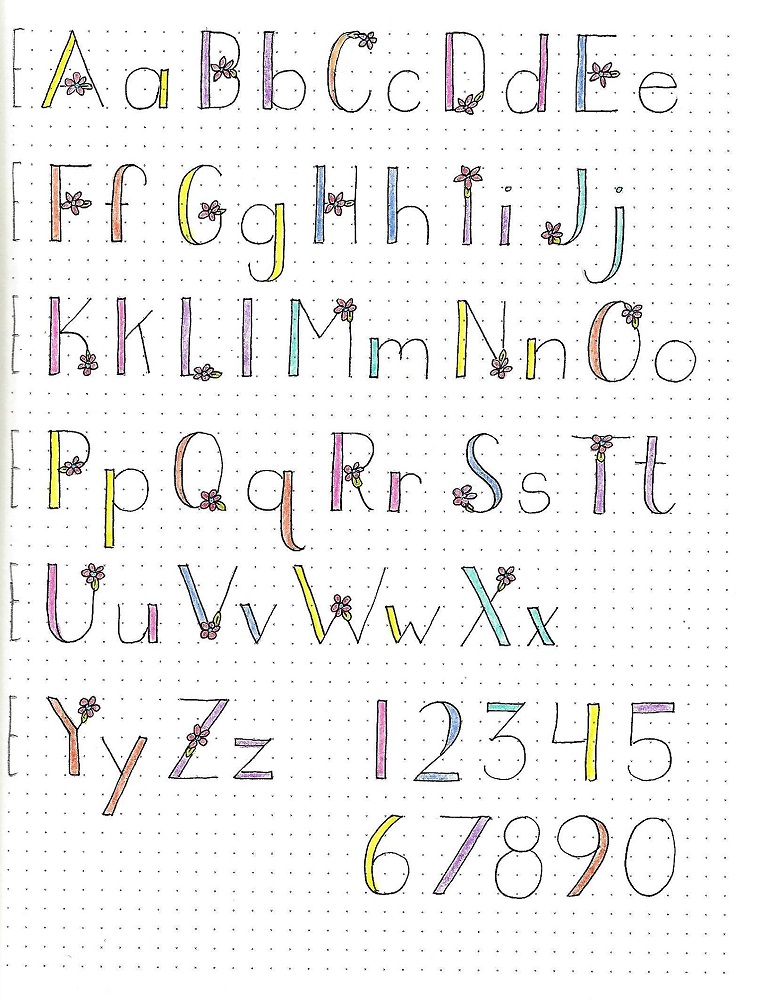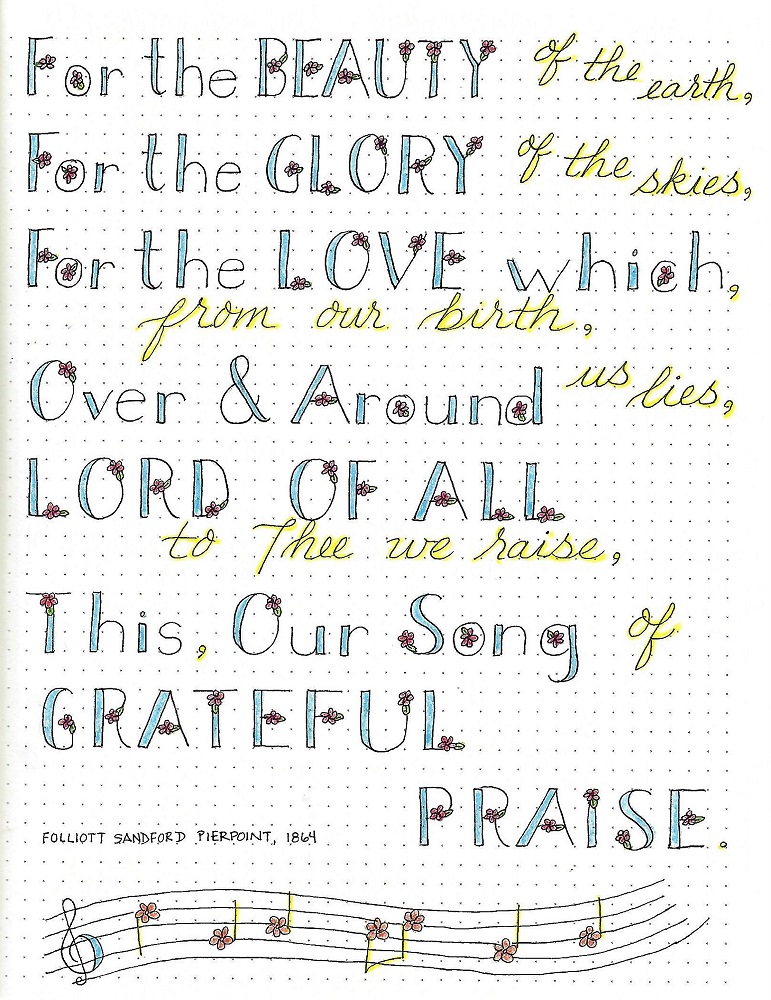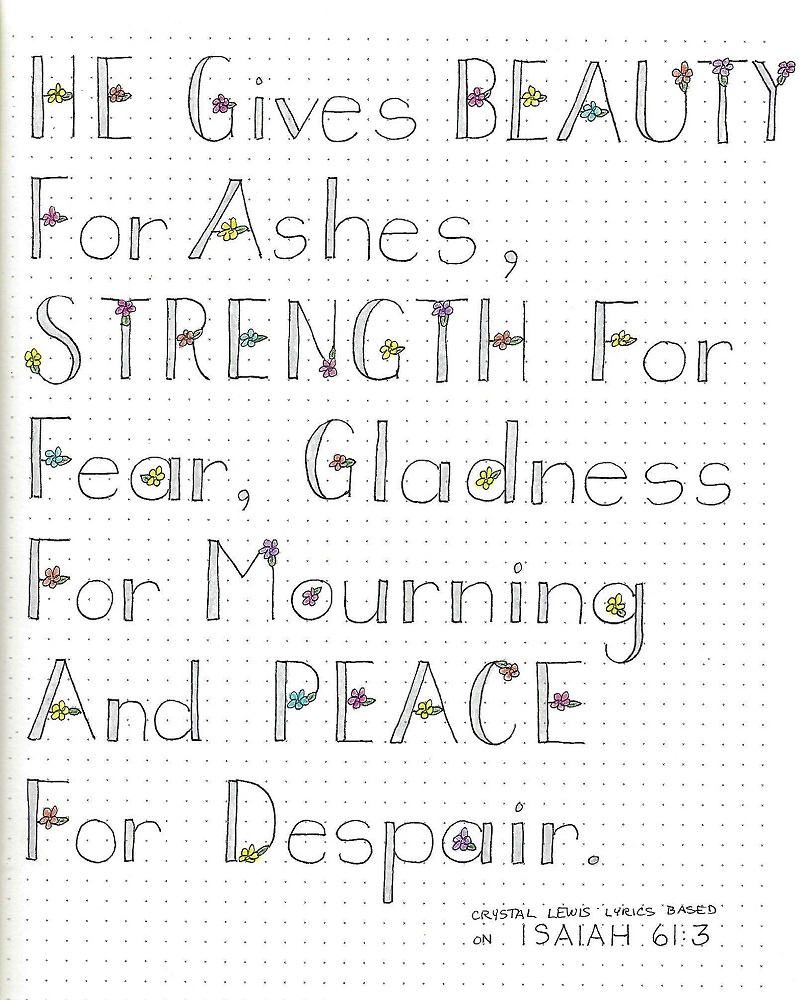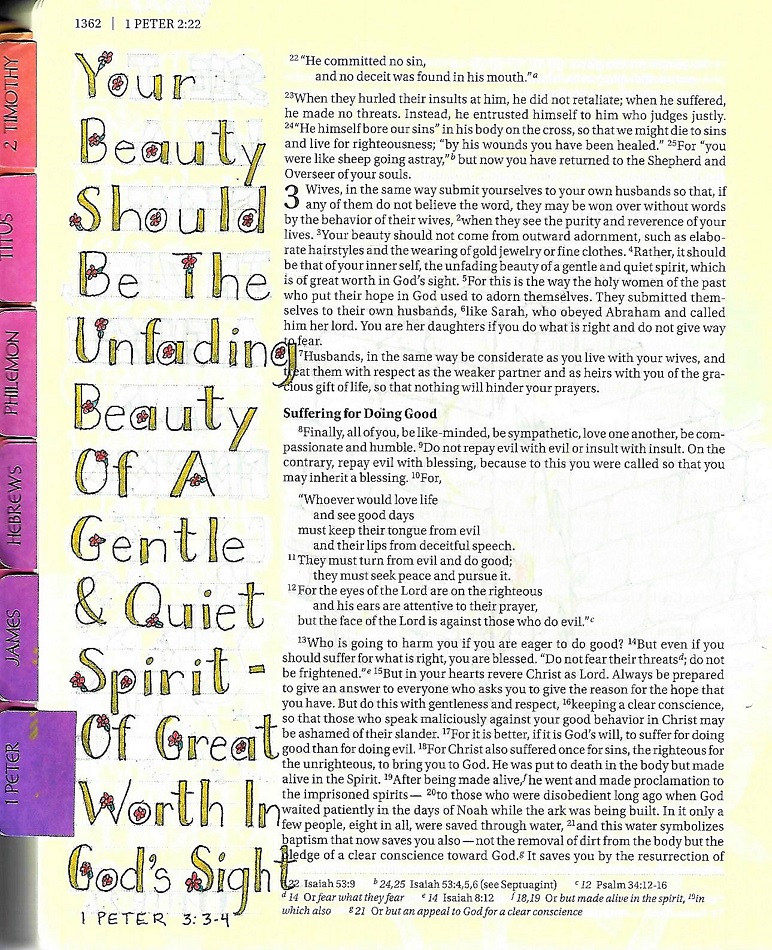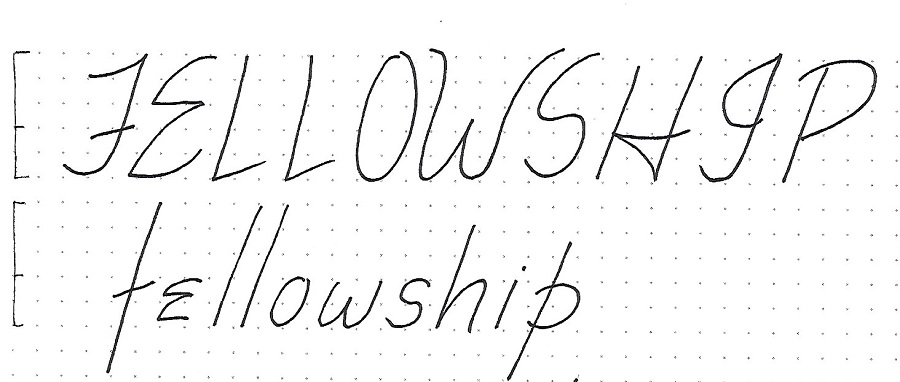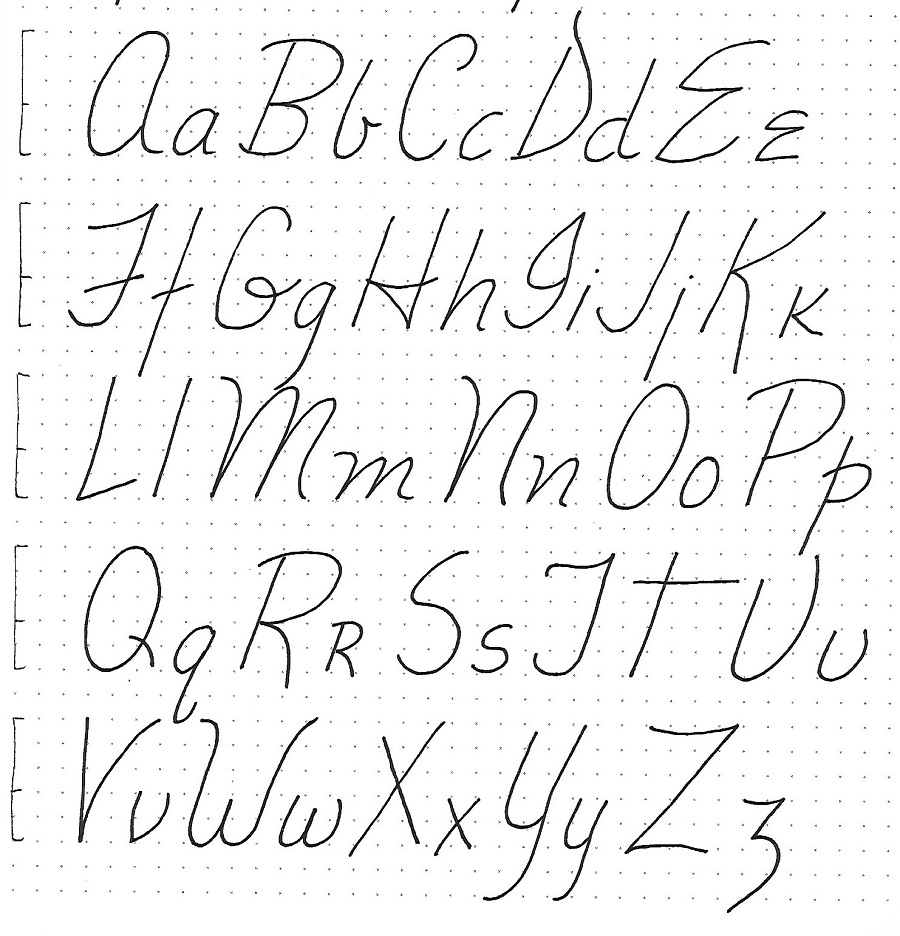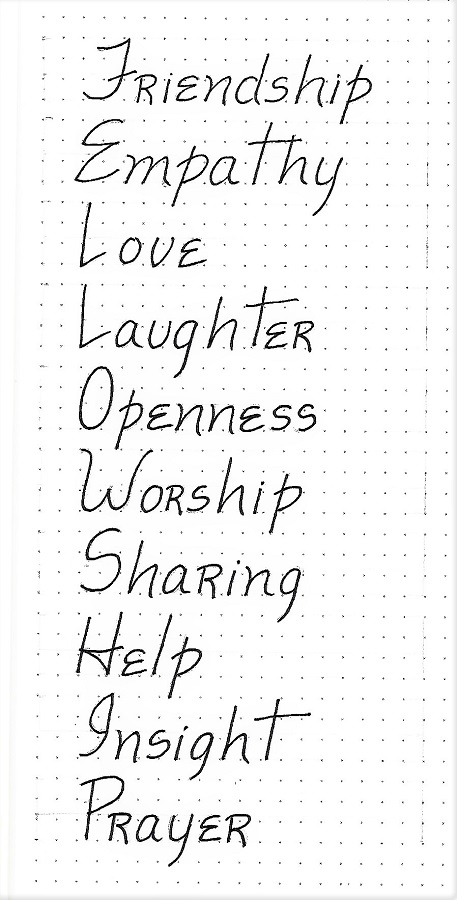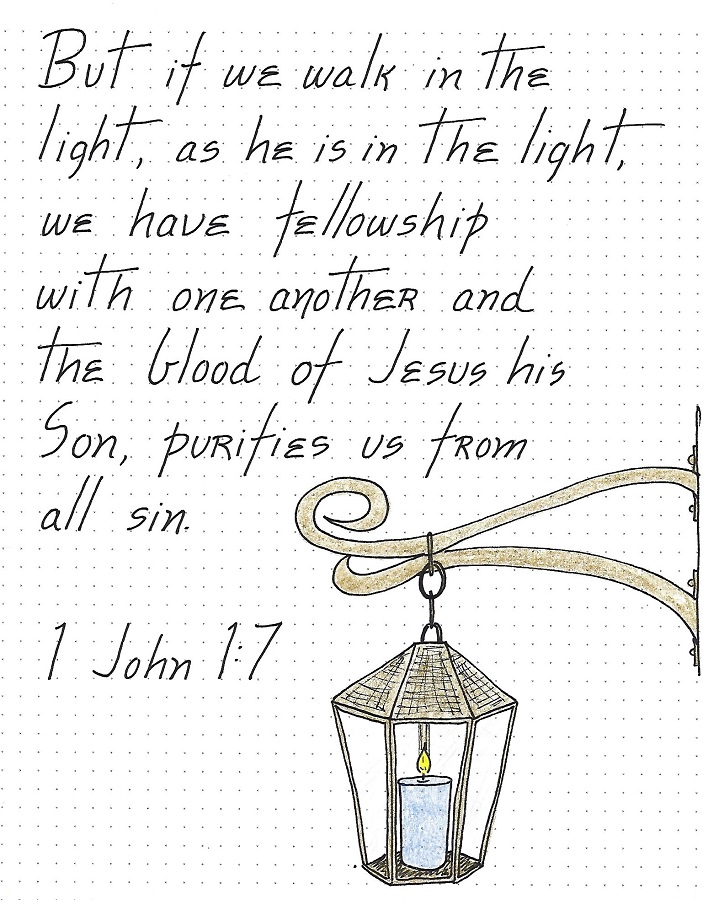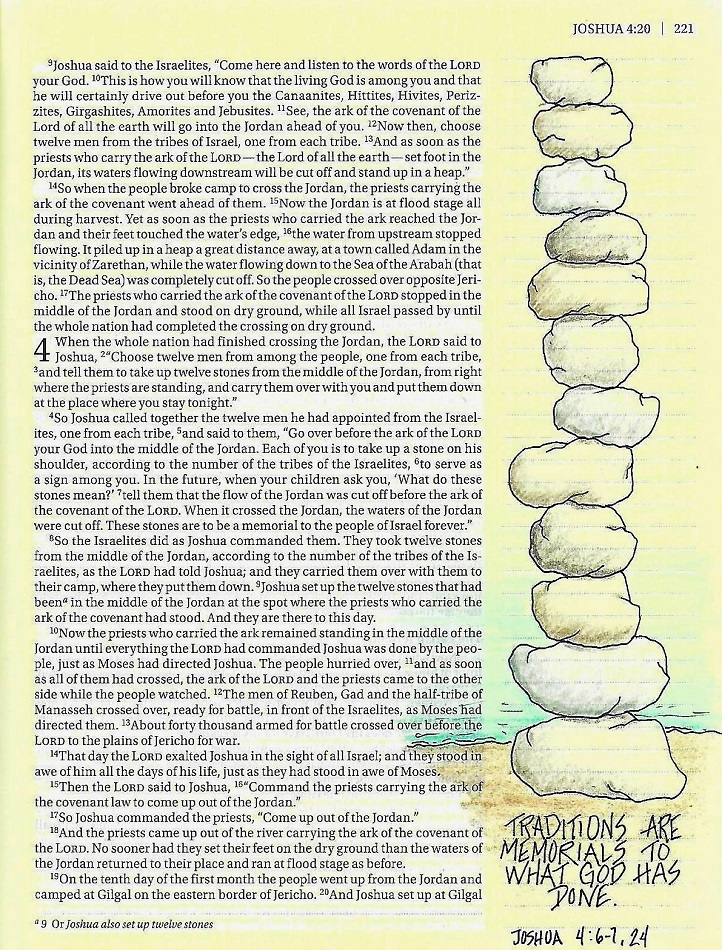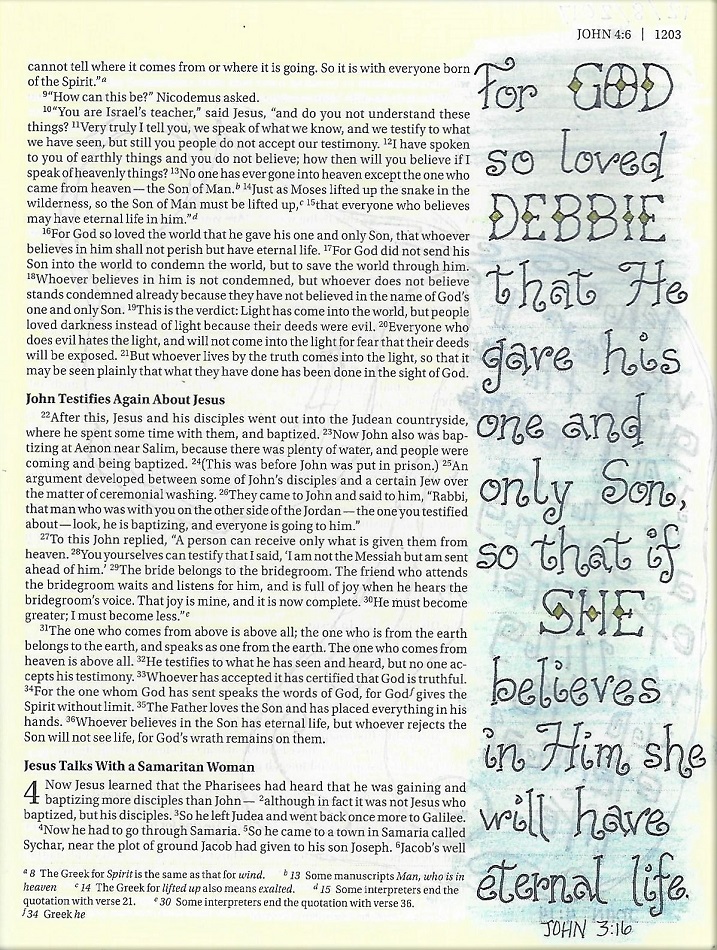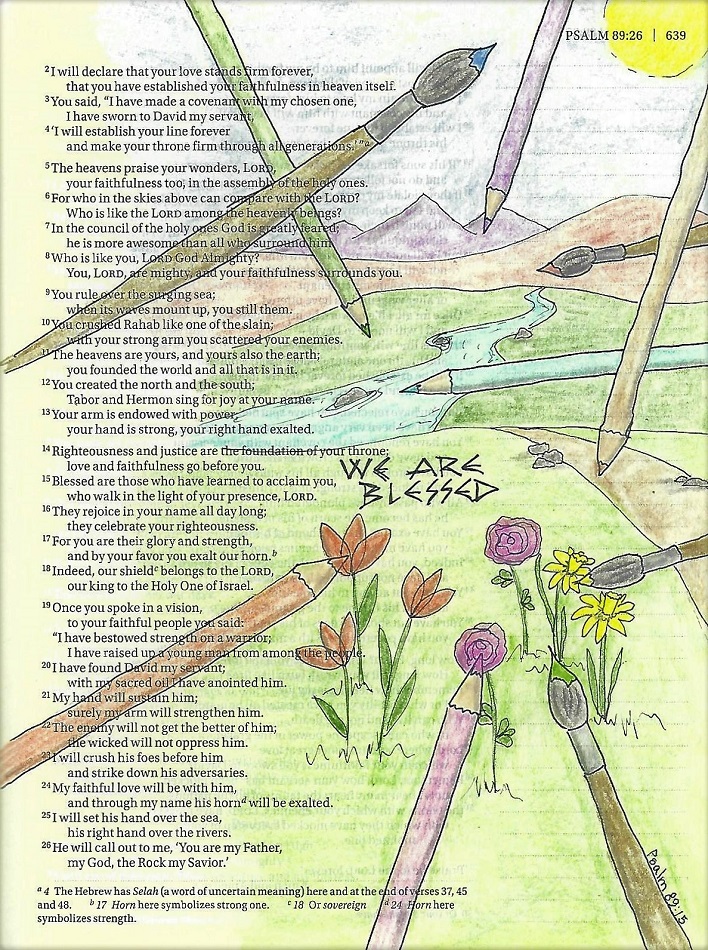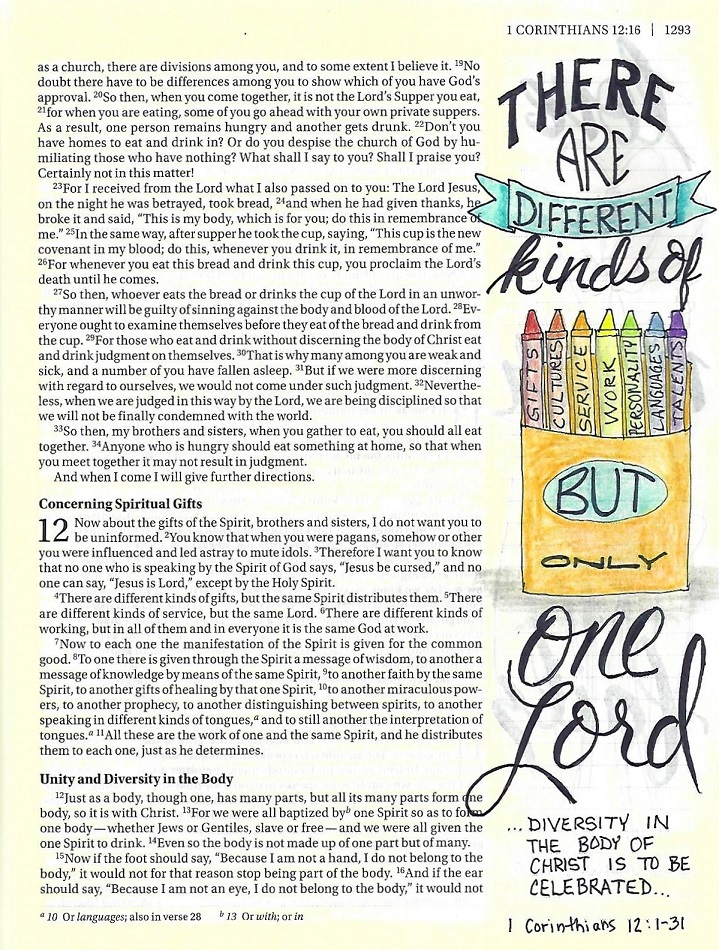My Inheritance
Topic: Bible Journaling
I found a cute font in a book I own and did some edits to teach it to my group.
INHERIT Font – Day 1 – Introduction
The font this week is likely going to be a big challenge for everyone. I know it was for ME! But it is just so beautiful and there are so many creative options for using it, that I wanted to teach this to all of you. We can really have some fun with this!
I called this font ‘Inherit’ but in this sample I used the form ‘inheritance’ so we could play with more letters.
There are several steps to forming the letters in this font. They may change slightly, depending on the letter, but here are the basics: Steps 1-5 are done IN PENCIL. 1) Draw the base letter shape. Most will be 3 units wide and 4 units high. 2) Add a thin second line where indicated. 3) Add a line on either side of those that will be wider. 4) Add ‘wings’ to lines where indicated. 5) Add curves, curls or tips where indicated. 6) Now switch to ink – fill in the single lines, the double lines retain a thin white strip between them. Ink the wings and other features. 7) Decorate the letters by adding contrasting ink ‘next to’ the left and bottom lines.
Once you get the sample ‘N’ done, go on to the whole word. I used gold glitter gel pen for my ‘shadow’ lines but you could use thin red or yellow lines for a different effect.
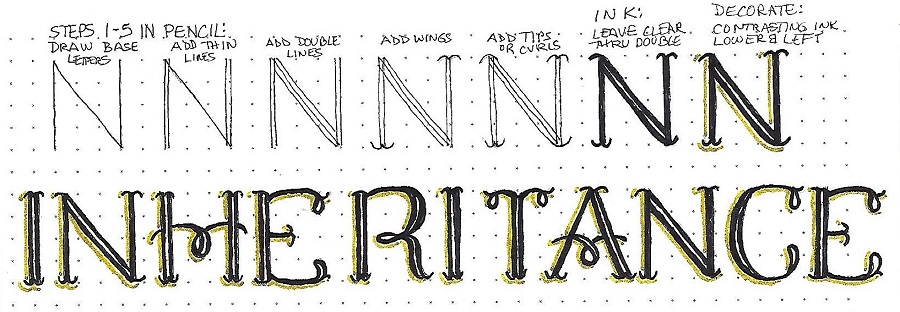
INHERIT Font – Day 2 - Alphabet
Good news! Since you learned 8 letters yesterday, and there are no lower-case letters, you’re 1/3 of the way done already! How cool is that?
What I love about this font? The little wings on the top and bottom, the double lines, extra little curls, the contrasting shadow lines… yes, I’m smitten.
I will admit that it is hard to get the thickened lines even. Don’t worry about it! Just do your best. The overall effect may just look more rustic. You can also try a thicker pen. I used an 08 Prismacolor. Later in the week I switched to a Prismacolor brush marker.
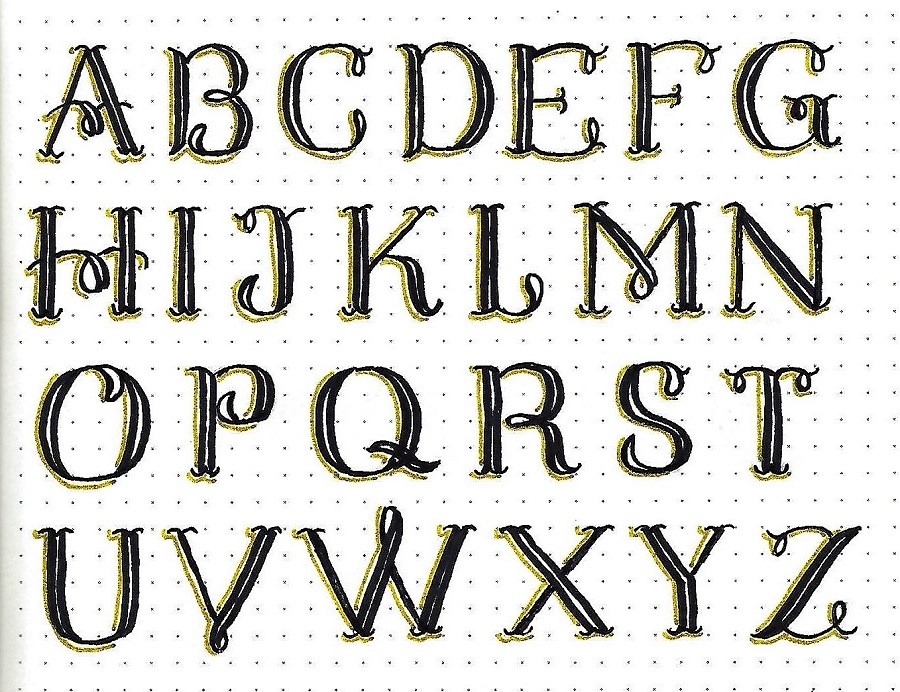
INHERIT Font – Day 3 - Redesign
Well, today we’re going to try out a bunch of variants on using the ‘inherit’ font.
1) For the ‘dots’ version, fill in all of the lines, both thick and thin, completely. Then use a white gel pen to make a line of dots where the open space would have been on the double lines. Leave off the thin shadow lines.
2) Use as a ‘monogram’. Remember, monograms have the last initial larger and in the center. Leave off the thin shadow lines on this one, too. I used my sister’s initials because my own (DDD) don’t really look good in monogram form. HA! Use gold glitter gel pen to create scrollwork behind the initials.
3) For the ‘shadow’ word, fill in all of the letter solid and leave off the thin lines. Instead, draw in a drop shadow on the lower right and fill with angled lines.
4) Use the font for only the initial letters of your words. Use a contrasting color to fill in the center spaces in the double lines. Use the same color for the thin shadow lines (I used red for both). Complete your words with faux brush script. Create a wreath (pencil first in the design stage) and ink with red and green fine-line markers.
If you haven’t tried faux-brush lettering yet, it is based on script handwriting and all of the down-strokes are thickened to make it look like you used a fancy pen. It’s easy-peasy and looks fabulous. See Susan Stump’s video instructions here: http://creative-bible-journaling.com/lettering-lesson-2-brushed-joy/.
You may come up with even more ideas for using this font.
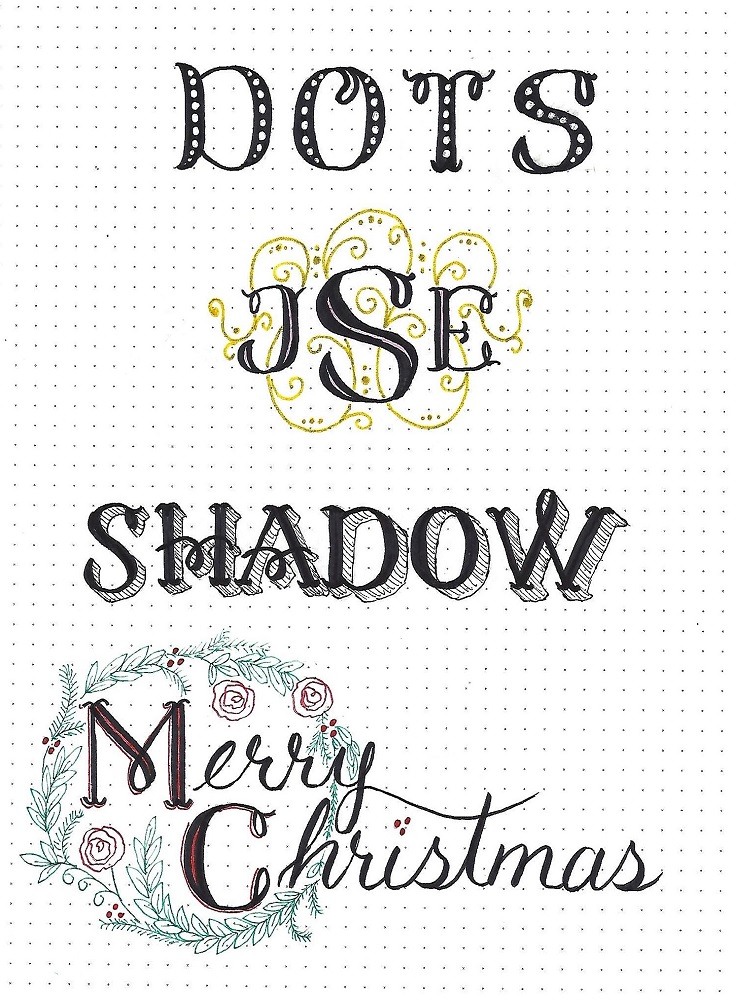
INHERIT Font – Day 4 - Scripture
Today we’re going to use the new font to write a scripture with the focus word on our practice paper.
Because it is so labor-intensive and takes a great deal of space, I used it only for a couple of the words and used two other fonts with it. As you can see it combines well with this faux brush script as well as a very basic upper-case print.
I used the gold glitter gel pen to tie everything together: the thin shadow lines on the ‘inherit’ font and the script, and as a solid fill on the supplemental print. (Script font instruction video here: http://creative-bible-journaling.com/lettering-lesson-2-brushed-joy/)
I used a skeleton key, which was in the week’s Drawing Room, to fill the bottom of the page and colored it with the glitter gold, as well.
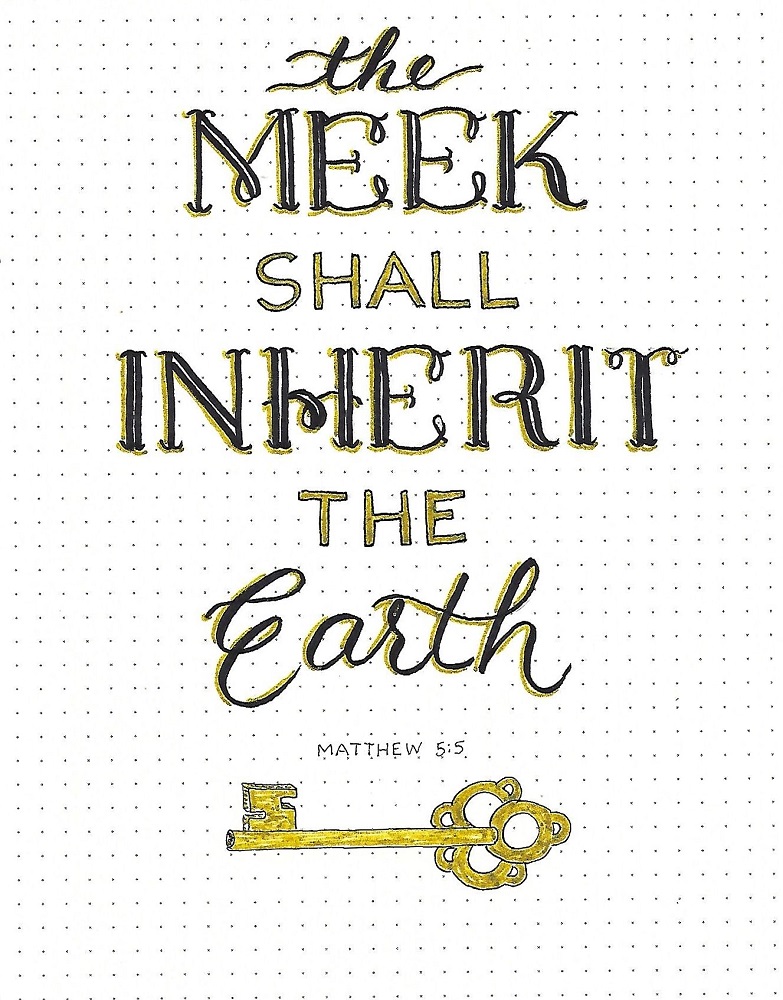
INHERIT Font – Day 5 - In Your Bible
It will be a little more challenging to use the ‘inherit’ font in your Bible due to the fact that is takes a lot of space AND it is harder to shrink than a lot of fonts.
I used a medium-thick (05) pen to create the lines so they would not be too thick. Then I left off the shadow lines. But I used the glitter gold gel pen to fill between the double lines instead of leaving them open.
The font was combined with faux brush script (http://creative-bible-journaling.com/lettering-lesson-2-brushed-joy/) and a very simple, single line upper-case print.
I used the shaft of the skeleton key (from the Drawing Room) to highlight the verse and used golden colored pencil on it. If you want to draw this key, the tutorial is at: http://creative-bible-journaling.com/drawing-lesson-d-238-skeleton-key/
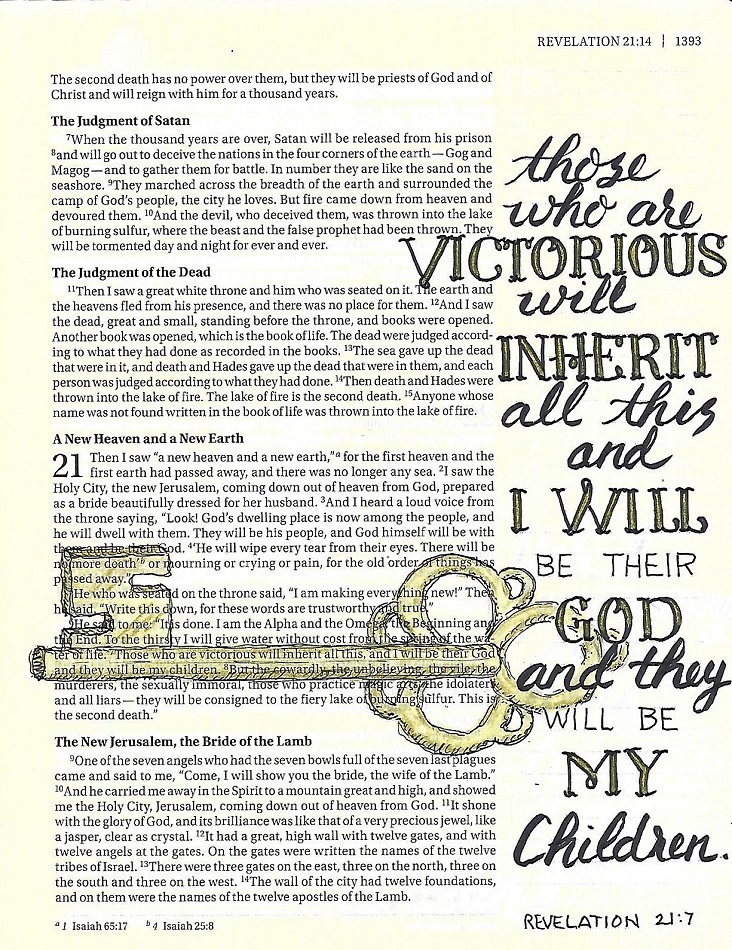
This has been a very fun font to use, mostly because it has so many options for embellishment. Give it a try!
Ddd
Posted by studio3d@ccgmail.net
at 8:45 PM PST
